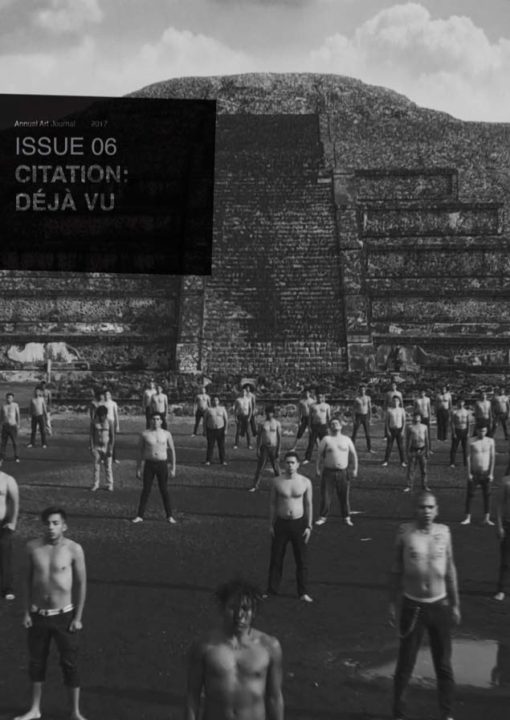The sensation of recollection and memory is exceptional, in that, when a recollection or a memory surfaces, it seems to do so on its own accord and on its own terms. One either remembers or one does not. The same may be said of familiarity, the triggers of the return often unexpected and unexplained, providing comfort or, alternatively, met with disquiet. Then there are the things that we try to remember, as well as those that we try to forget — the latter, an exercise consigned to failure in the attempt — in a desire or compulsion to return to the scene, to replay it or to remind one’s self.
SOMETIMES I REPEAT MYSELF
Presented in the following pages are the contributions of artists invited to respond directly or indirectly to remembering, forgetting, reminding, repetition, fear of forgetting, trying to forget, past lives, and the things that dog one, intentionally or otherwise. Just as in recollection, memory, and familiarity — where the sensation and its arising appear as if of the thing in itself — these contributions are developed for or presented with the form and dimensions of the journal in mind, reflecting a consideration of the experience of the image or a correspondence with its source, as well as its reproduction and dissemination. Producing, as such, a showcase that is exactly what it is: a journal section of and for recall.
Weixin Quek Chong
Singapore
android fallacy fantasy
digital photographic image taken with Sony Xperia M4 Aqua, 2017.
The mobile phone (handheld, android always android) is my repository, the replaceable sensorial prosthetic, the container and concordance of the remembered / reconstructed… When a phone dies suddenly, I mourn the loss of text-image-triggers, encodings of Past / Present / Future and the repeated re-call or revisitation of these ghosts.
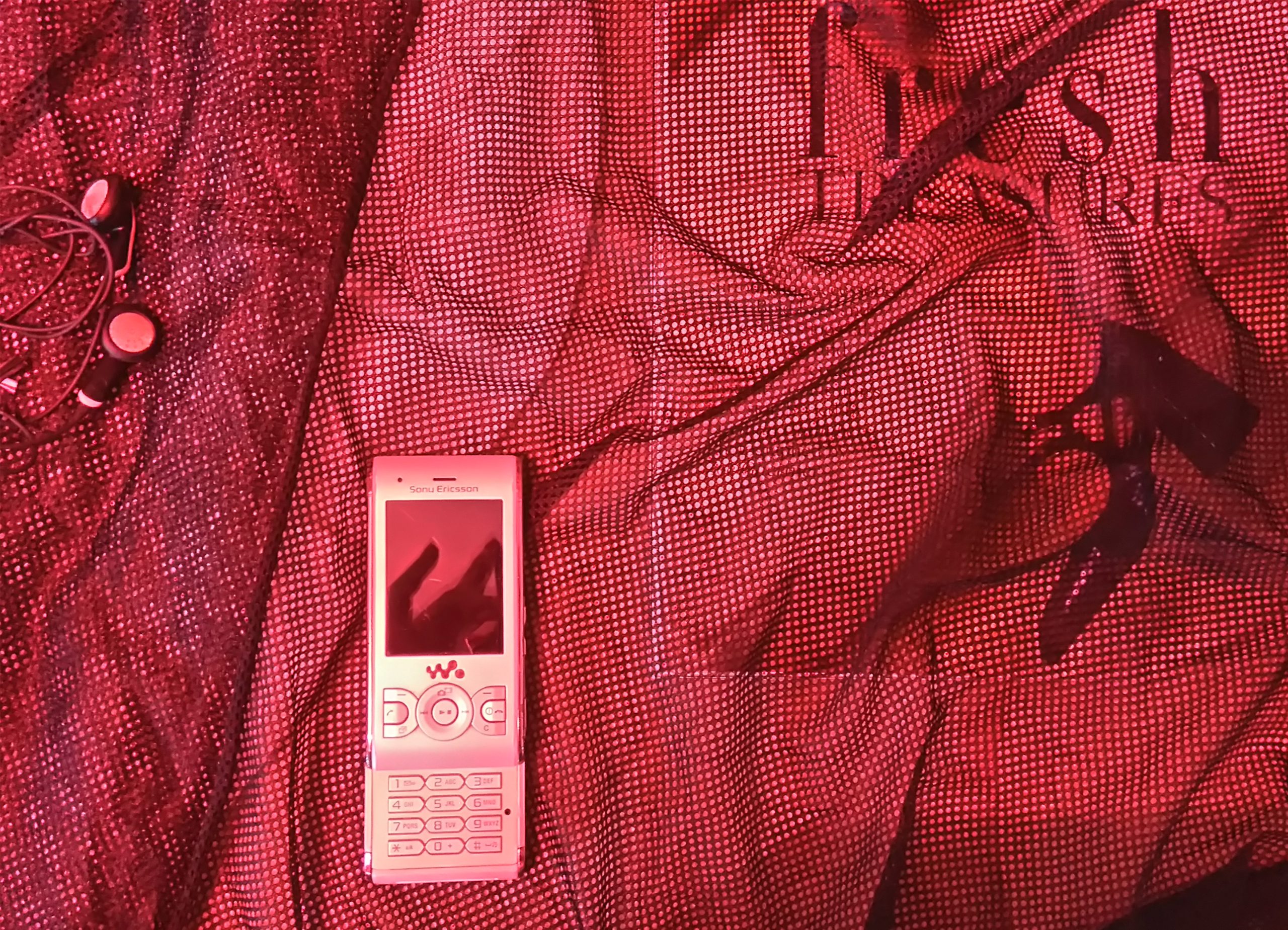
The way thoughts are spread across these different devices ensures their fragmentation
Who will be able to put together the pieces of someone else’s notes?
My brain the (organic matter) key to my soul spread across these devices; among their hardwire
SIM storage memory cards lie the pieces of what I am, the sensations sensed by this bodily extension
(when they don’t work anymore) what is left are retrieved hard drives, transferred file ghosts.
Nothing
is a thing that you can lean on, Nothing will hold you,
Nothing will regenerate your flesh
Anouk Kruithof
Born Dordrecht, The Netherlands. Lives and works in Mexico City.
#EVIDENCE
2015
#Evidence draws from Kruithof’s research of the Instagram output of 27 corporations, 15 government agencies and 11 institutions in America — images with clear promotional intent and thus questionable veracity. Twisting, altering, stretching and combining selected screenshots of this source material, Kruithof claims the imagery as her own, robbing it of its promotional intent, and adding new, varying intentions and messages.
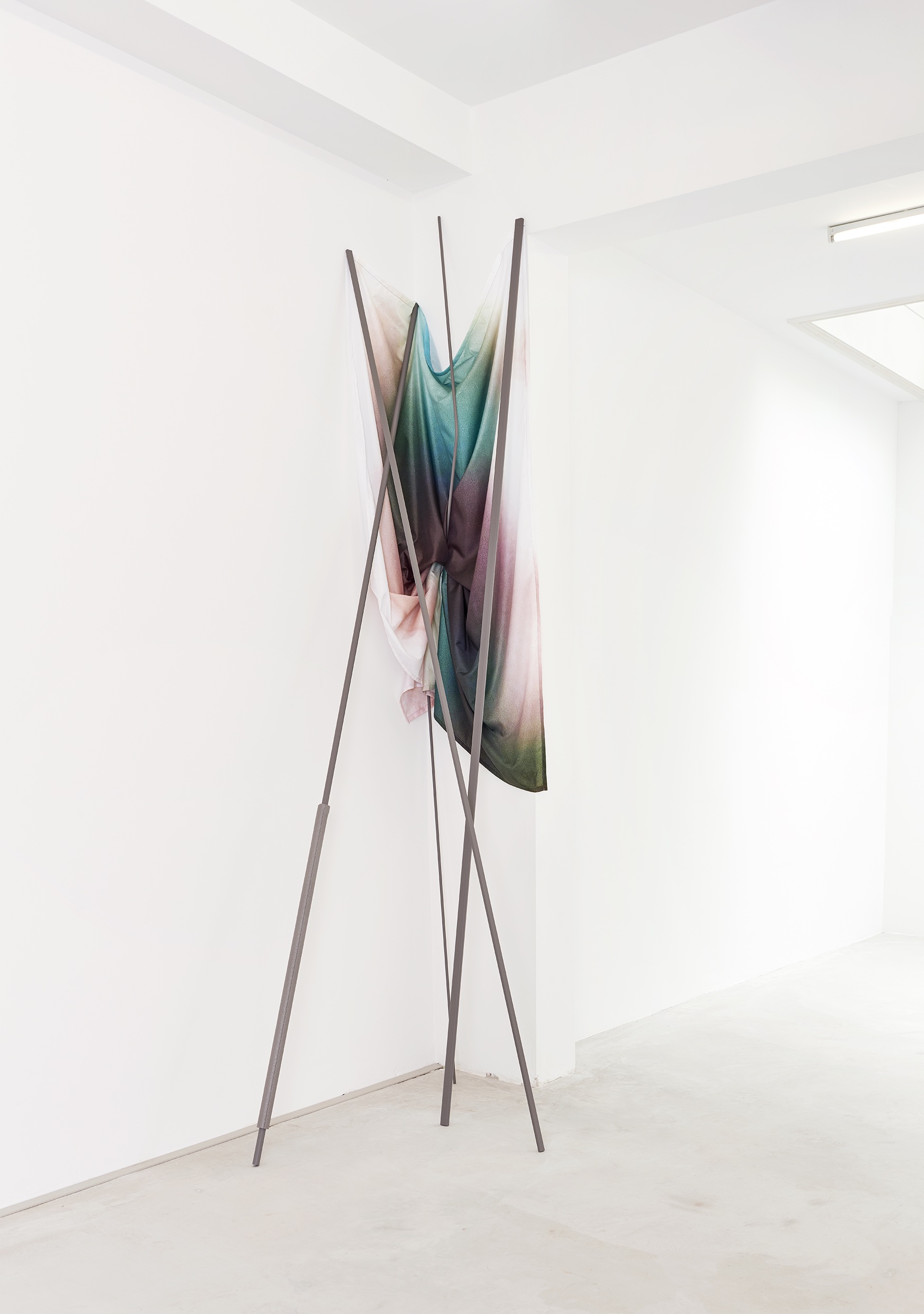
Neutral (restless)
sculpture, 300 x 115 x 88 cm, graphite grey metal construction with pipe-
insulation and 140 x 200 cm print on PVC curtain.
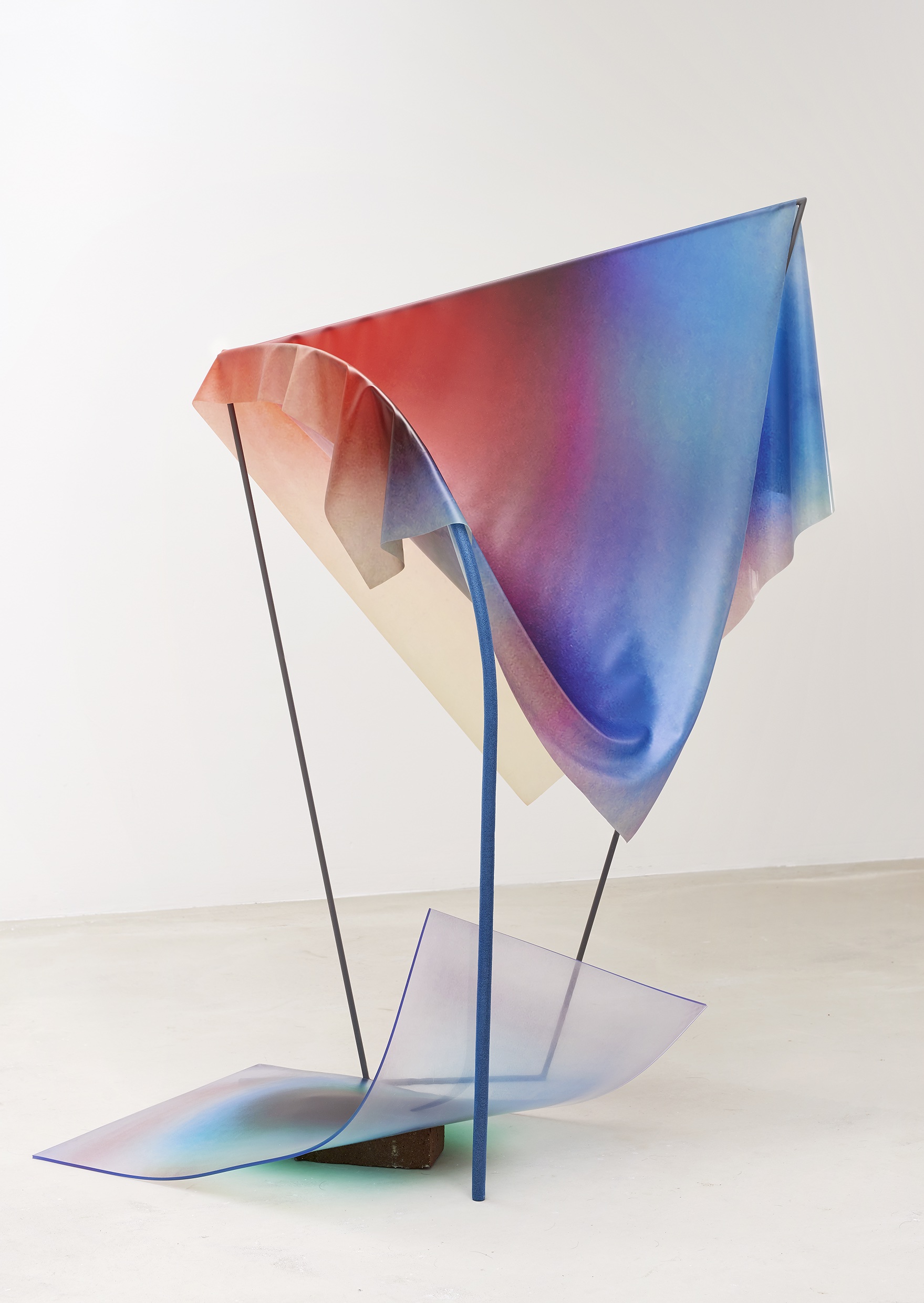
Neutral (confident)
sculpture, 105 x 46 x 80 cm, graphite grey metal construction with pipe-
isolation and 98 x 16 cm flatbed print on latex and 55 x 87 cm flatbed print on vinyl.
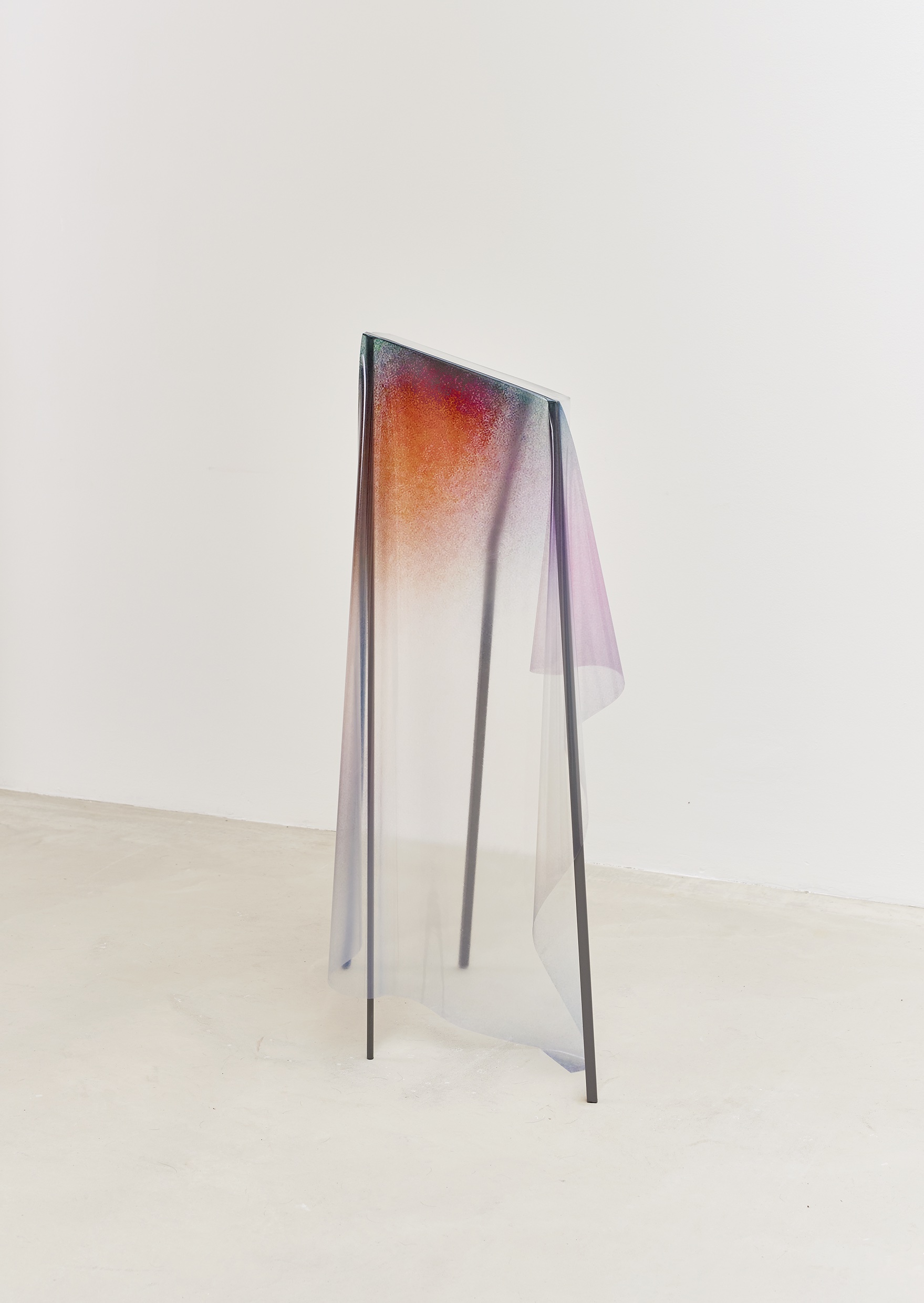
Neutral (mellow)
sculpture, 110 x 40 x 40 cm, graphite grey metal construction with pipe-
isolation and 125 x 71 cm flatbed print on thin plastic (PVC 0.5 mm).
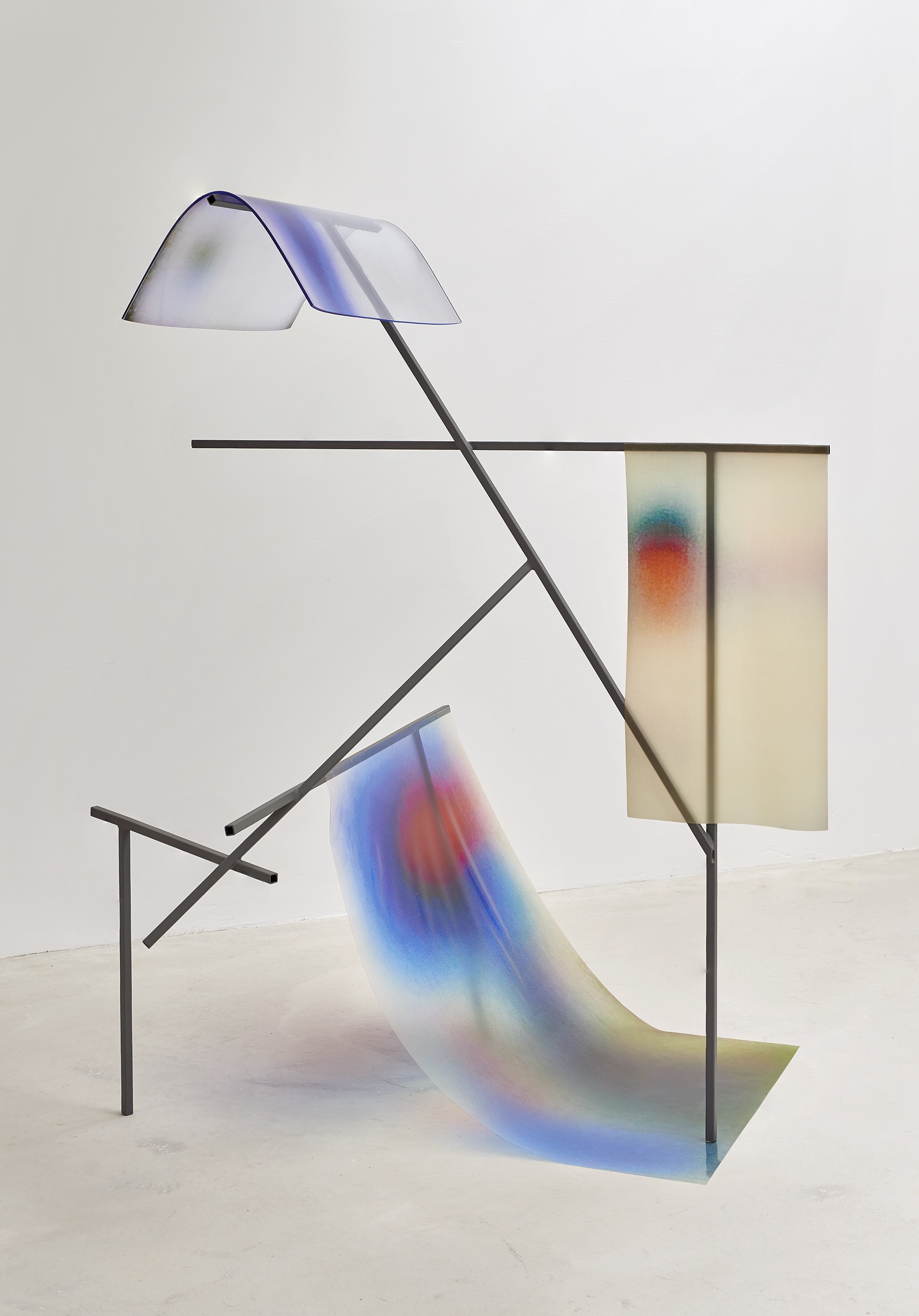
Neutral (puzzled)
sculpture, 154 x 120 x 110 cm graphite grey metal construction and flatbed
print on latex, thin plastic and vinyl.
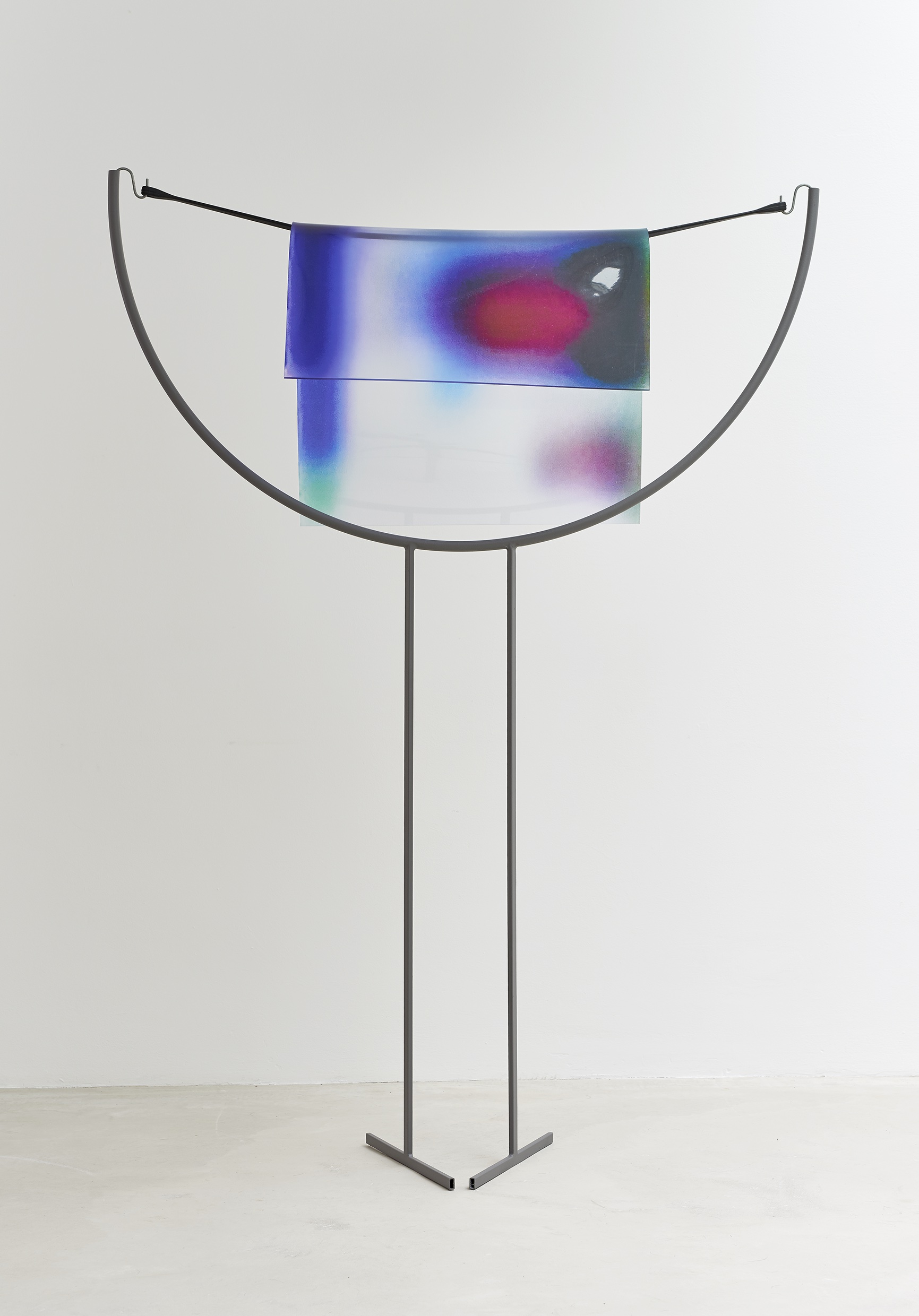
Neutral (openhearted)
sculpture, 178 x 123 x 30 cm, graphite grey metal construction and 87 x 61 cm
flatbed print on vinyl and black rubber band.
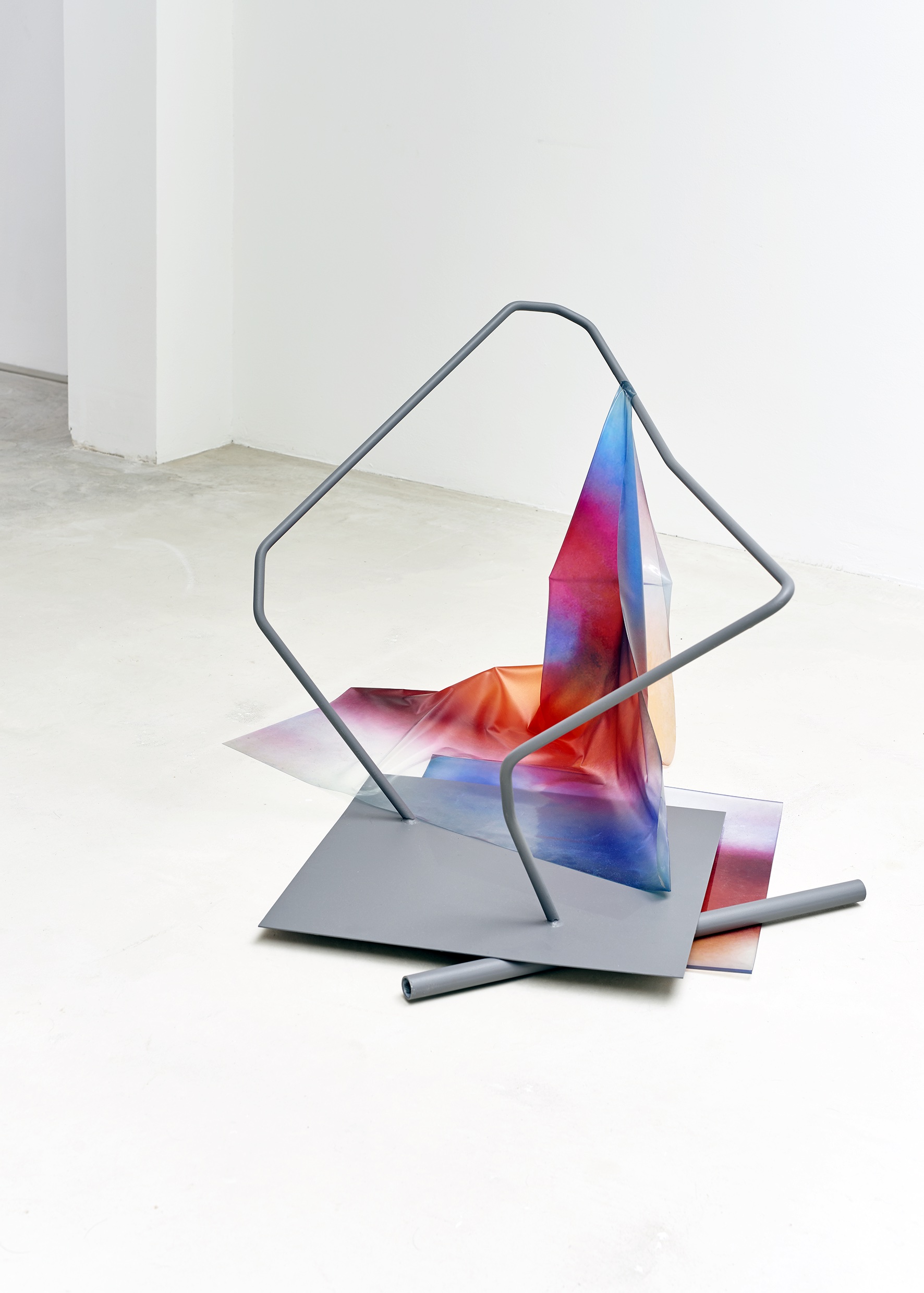
Neutral (psyched)
sculpture, 65 x 100 x 65 cm, graphite grey metal construction and 80 x 76
cm flatbed print on thin plastic (PVC 0.5 mm) and 50 x 47.5 cm flatbed print on vinyl.
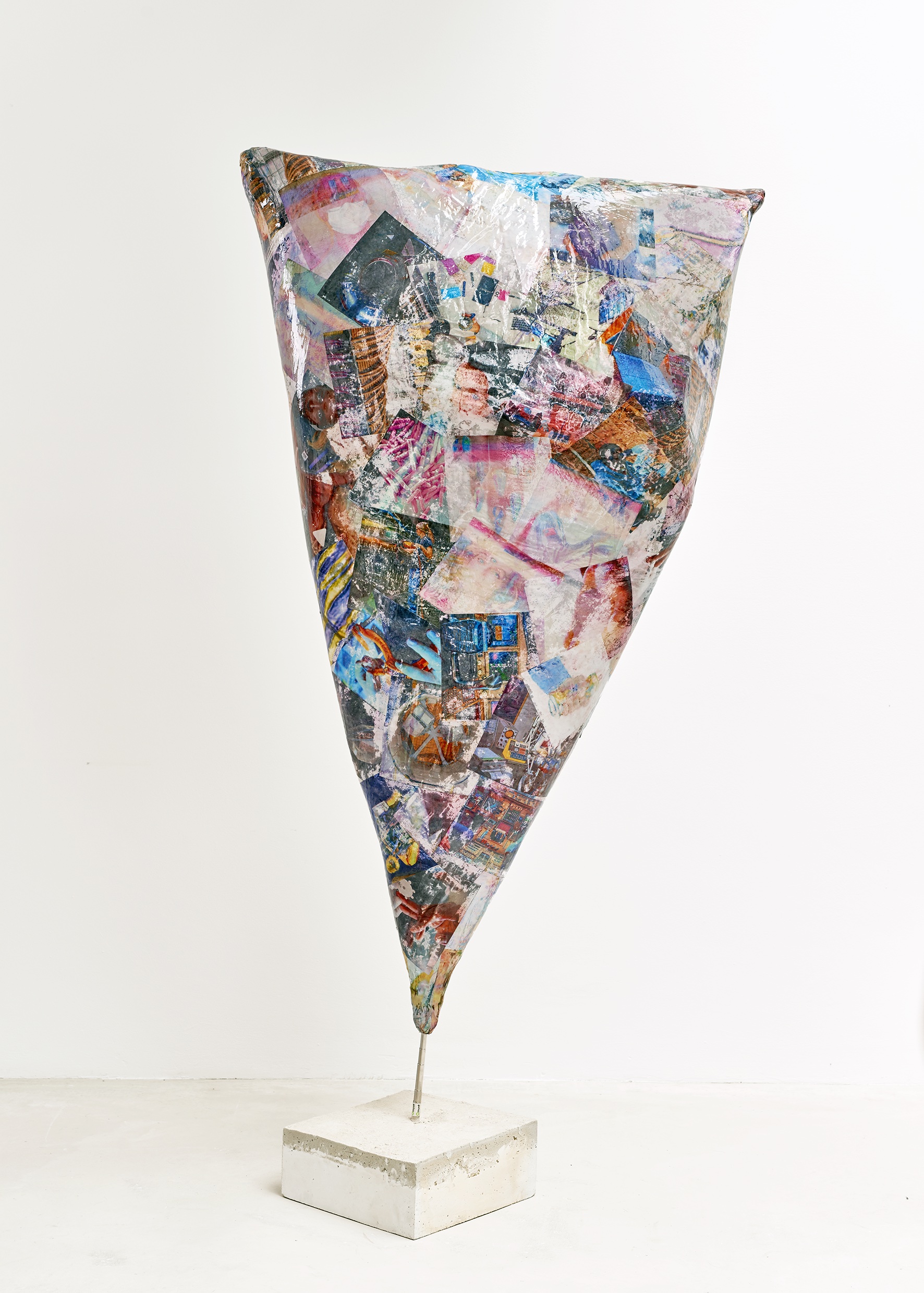
Sorry, no definitions found…
sculpture 207 x 103 x 60 cm, Selfie-stick in concrete and papier-mâché with
resin and + 150 inkjet prints 20 x 20 cm each.
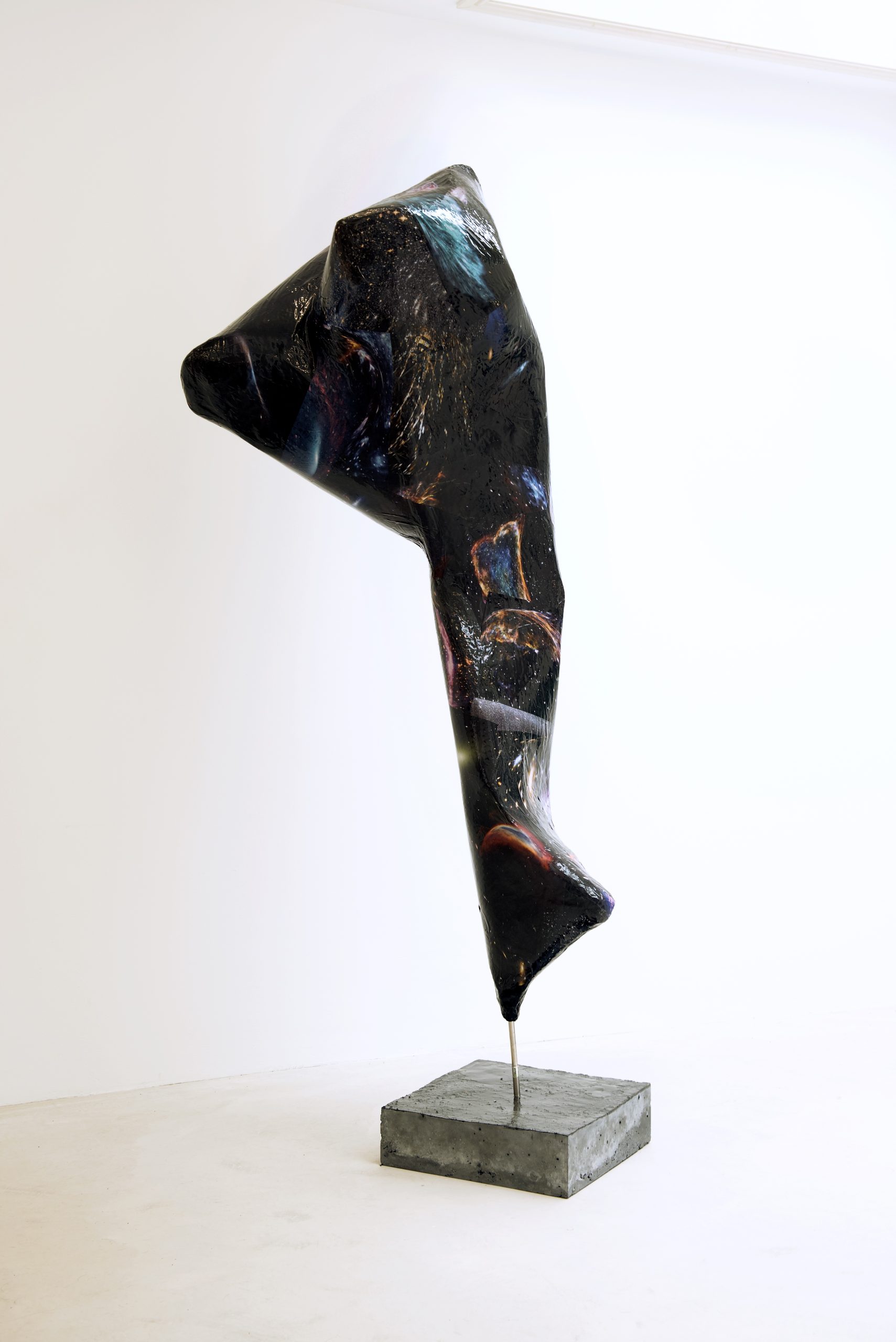
Another Universe
sculpture, 230 x 95 x 80 cm, Selfie-stick in concrete and papier-mâché with
resin and + 200 laser prints 28 x 40 cm each.
In Neutral, the source images are the blurred-out ID cards that accompany confiscated items (mainly weapons) from screenshots of the TSA’s (Transportation Security Administration) Instagram feed. Sorry, no definitions found… comprises a mix of high-tech-curiosity filled imagery taken from all the different researched Instagram accounts. In Another Universe, screenshots from NASA’s (National Aeronautics and Space Administration) Instagram feed are deliberately twisted in Photoshop to create a misleading universe.
Kedsuda Loogthong
Songkhla, Thailand.
The x-ray film reveals an abnormality of blood vessels found in my mother’s brain — lines of veins crossing and overlapping without beginning or end. These vessels have inspired an exploration of abstraction in line, colour, and space that form and recall the web and bonds of blood, in kinship and, even, gift.
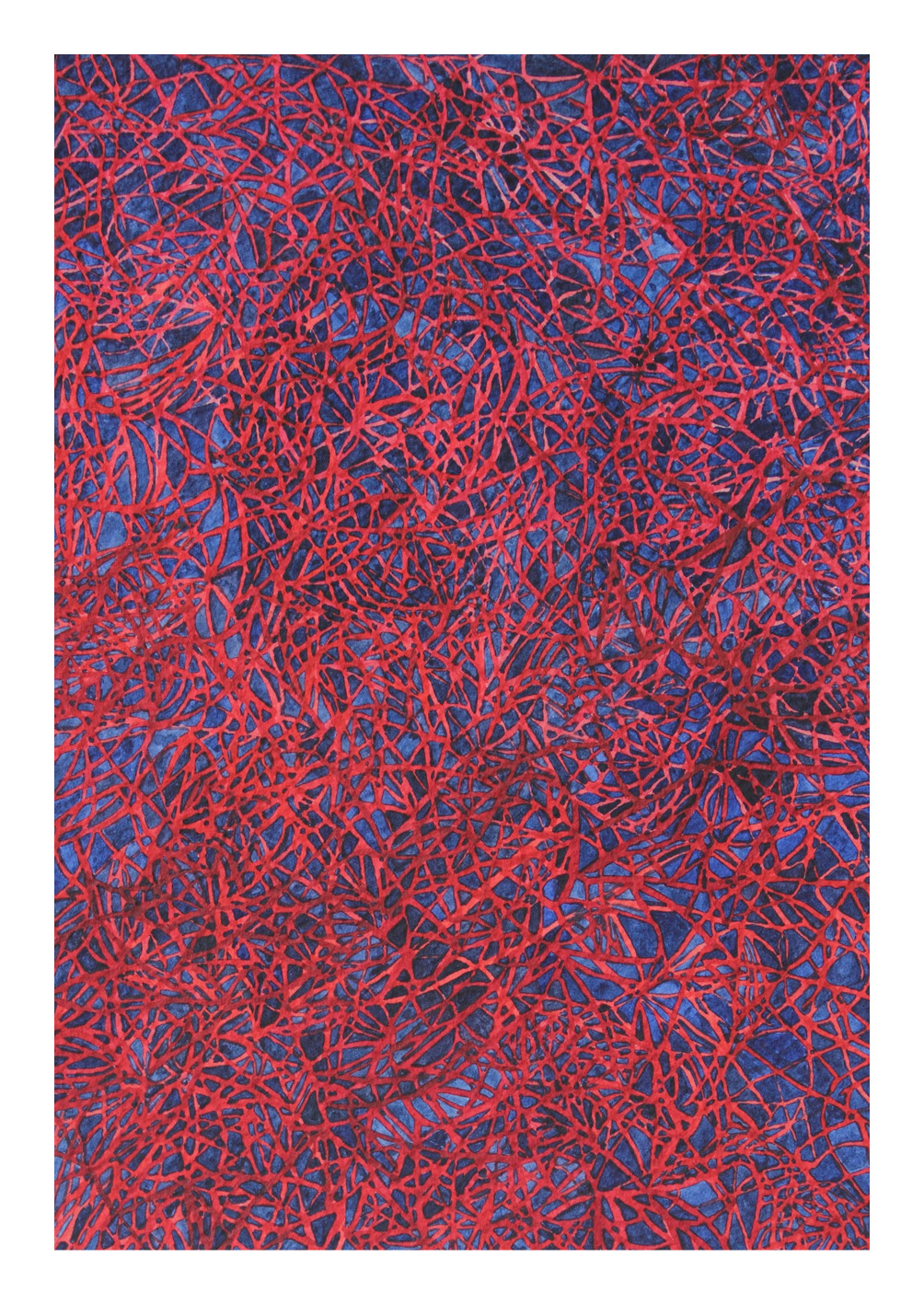
Spiderweb of Spirit
watercolour on paper, 25 x 17 cm, 2017.
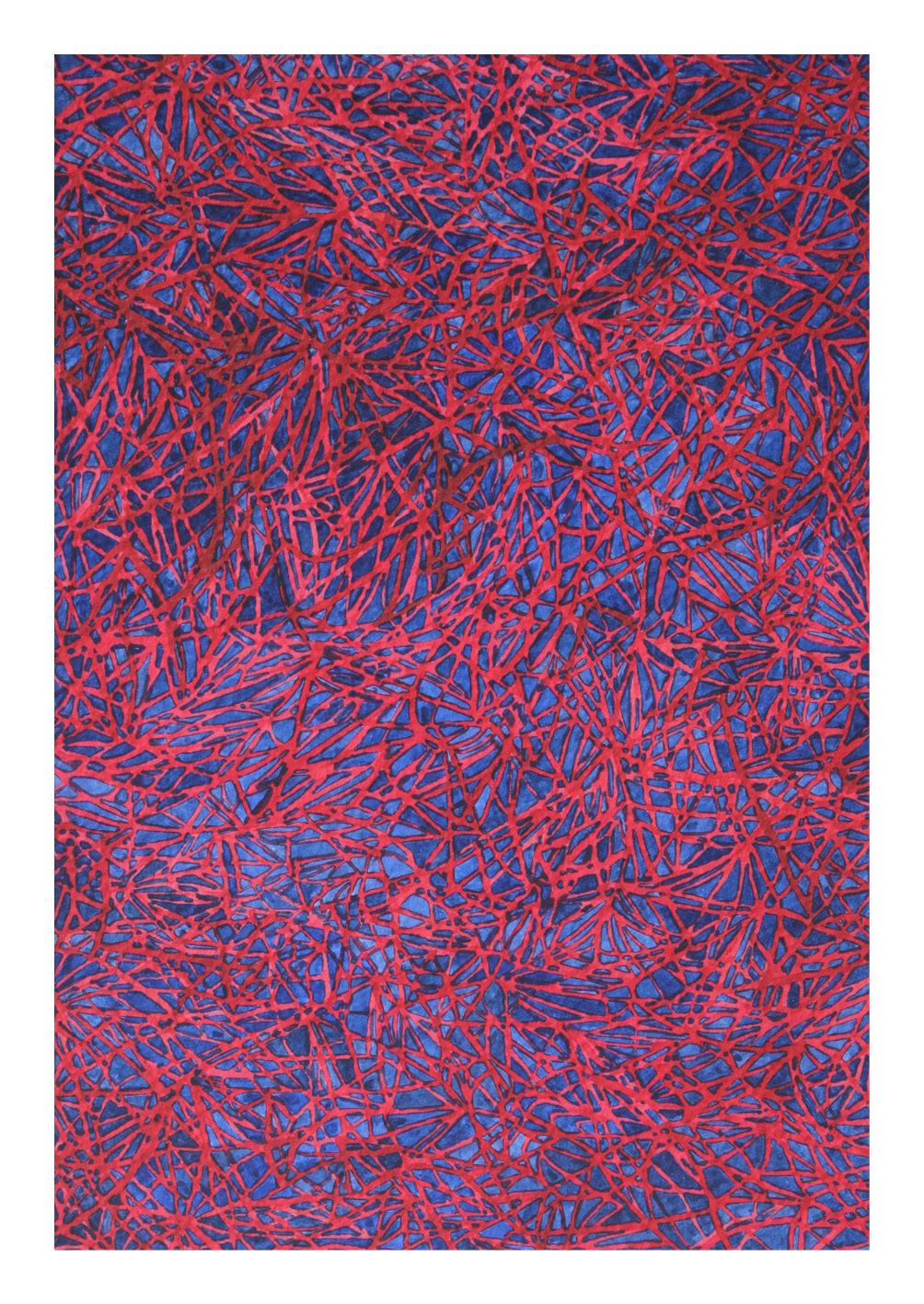
The Boomerang of Red
watercolour on paper, 25 x 17 cm, 2017.
Hajnal Németh
Born Szőny, Hungary. Lives and works in Berlin, Germany.
WHITE SONG – Among Others (Race Abstraction)
photo series, 2016
The verses on the four photos are taken from Roy Harper’s song
“I Hate The White Man,” 1970.
I abstracted single parts from the refrain and changed the colour to red, yellow and black.
Since I introduced a comma after the colour, I changed the meaning of the sentence as well.
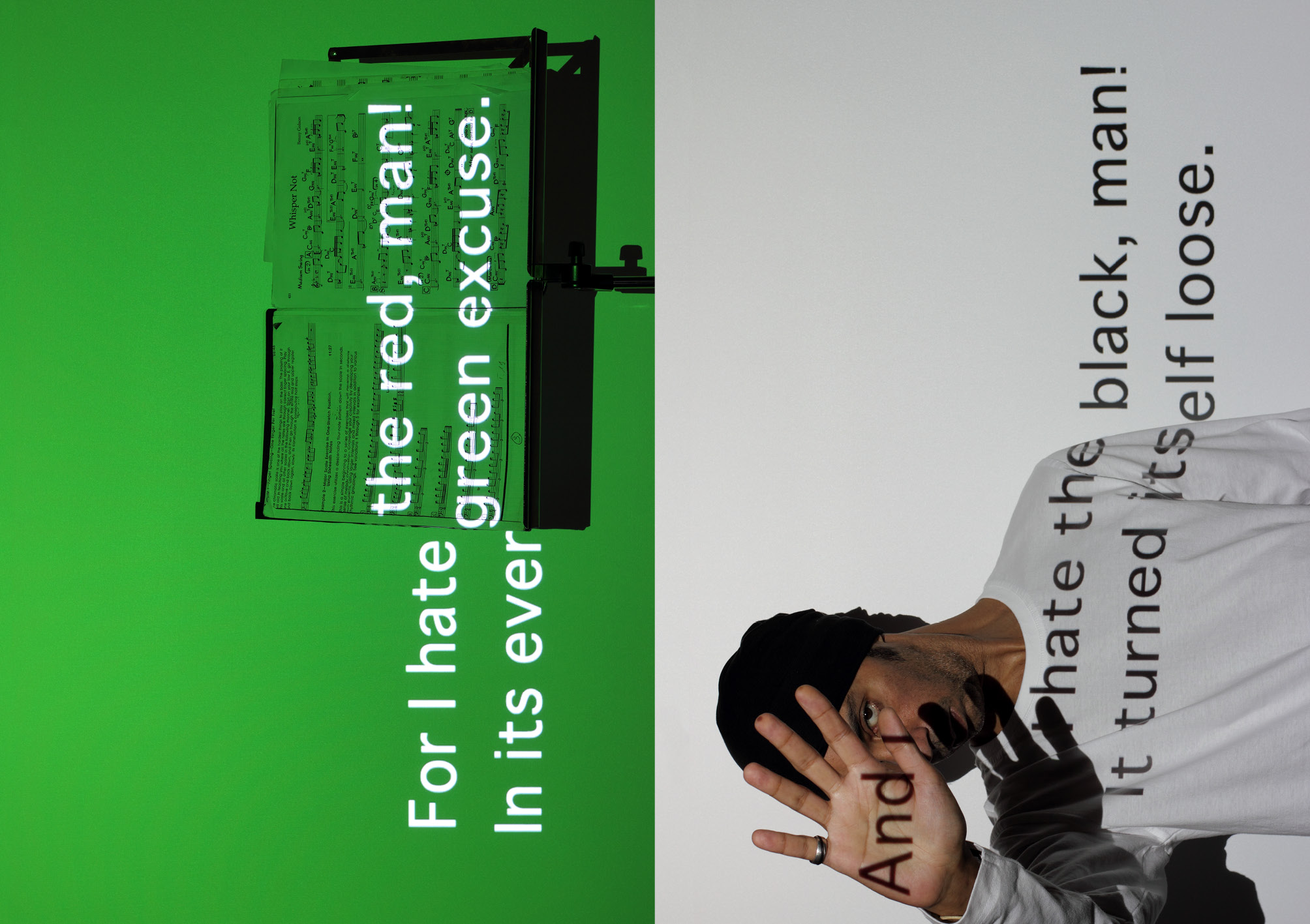
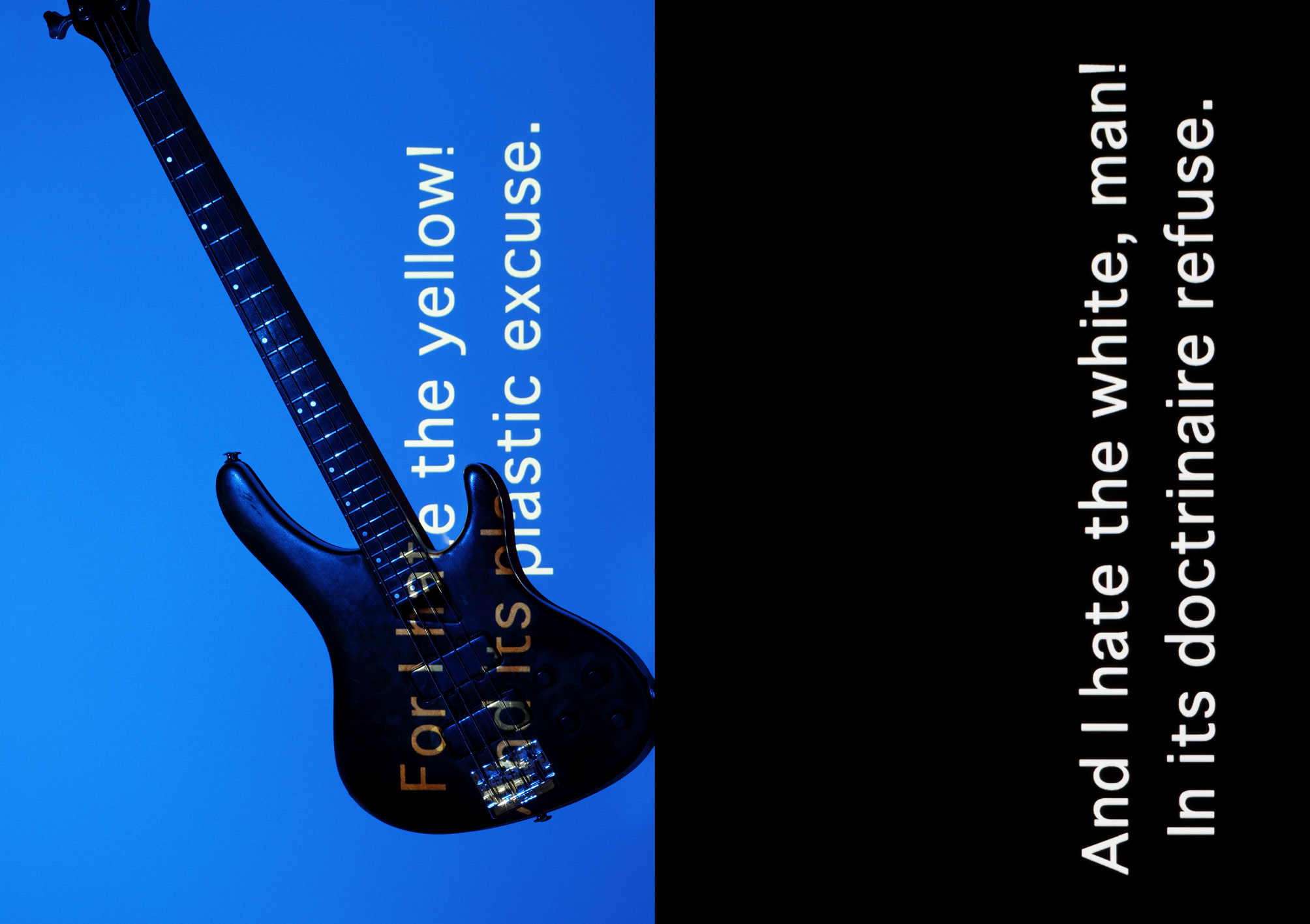
Marienne Yang
Singapore
Fast-forward 50-years – how will we be remembered, and what would we be remembered for?
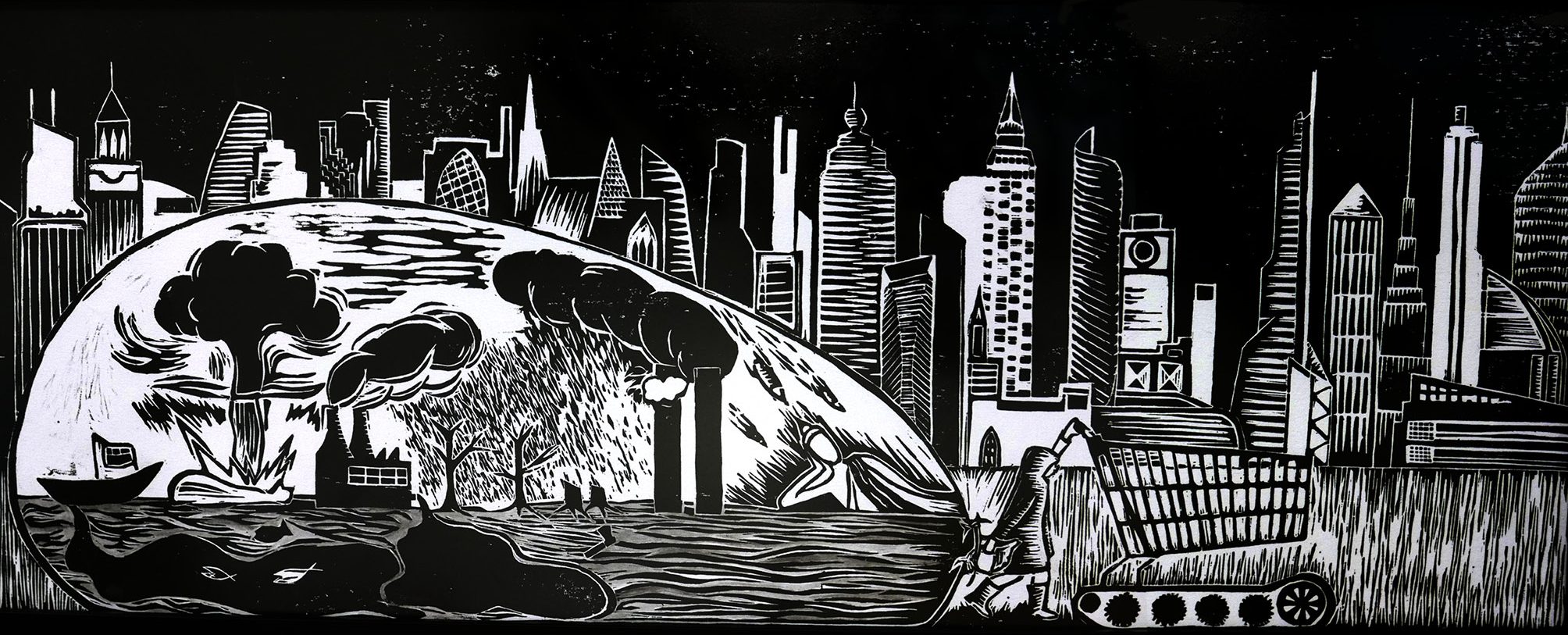
When the Children Cry I
Hand-coloured relief print, 23 x 60 cm, 2015.
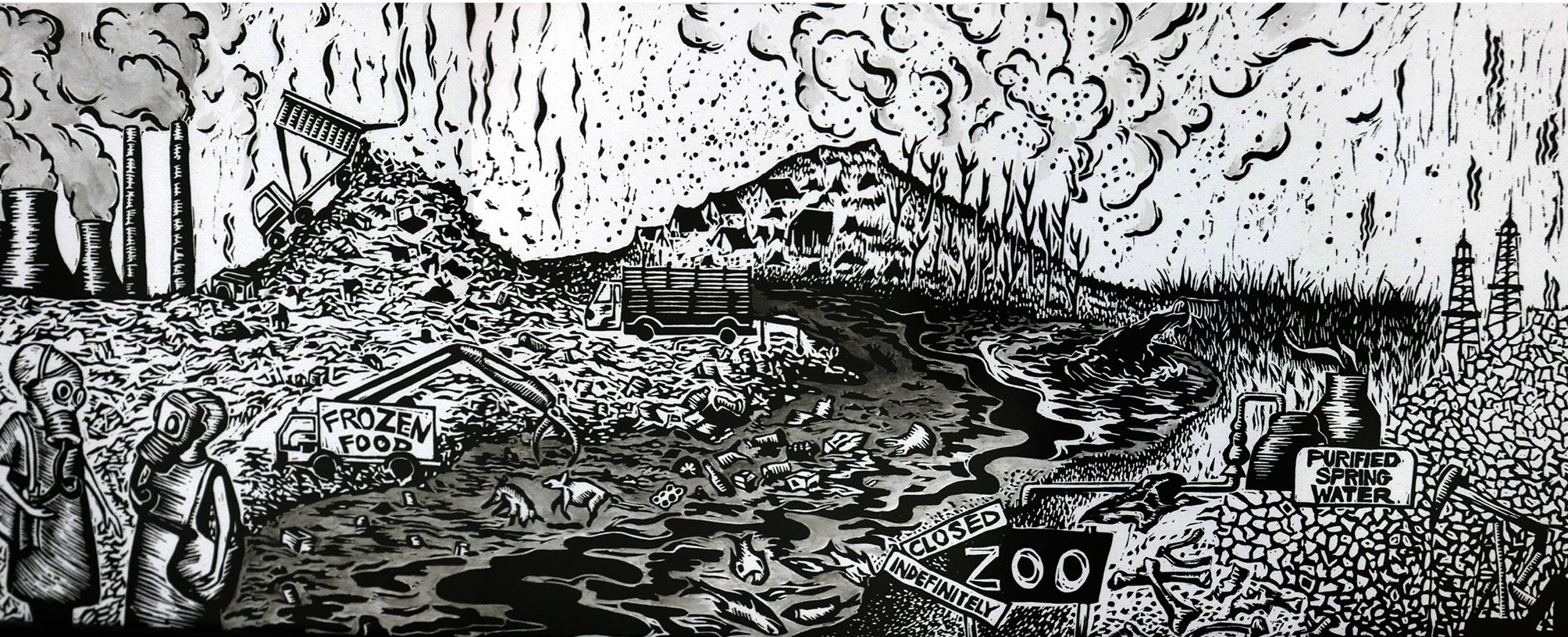
When the Children Cry II
Hand-coloured relief print, 23 x 60 cm, 2015.
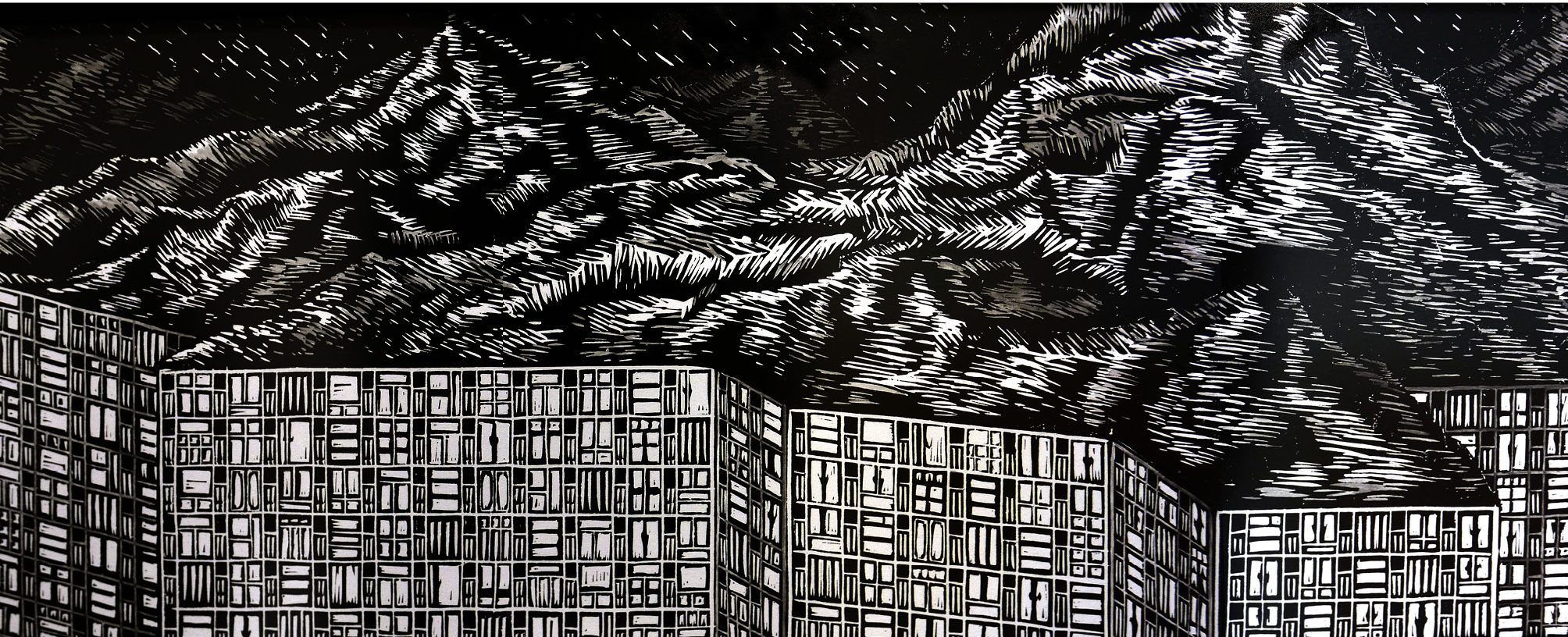
When the Children Cry III
Hand-coloured relief print, 23 x 60 cm, 2015.
Au Sow Yee
Born Malaysia. Lives and works in Taipei and Kuala Lumpur.
Kris Project III: A Day Without Night in Tokyo
from the storyboard of a film to be completed in 2018.
Part of The Kris Project (which draws from filmic archives of the 1950s and 1960s to re-imagine history and ‘phantoms’ of the Malayan film industry during its heyday), A Day Without Night in Tokyo shares from the artist’s upcoming film: an intertwining tale of hidden power and memories’ construction inspired by the seemingly non-existent film, A Night in Tokyo (Malam-di-Tokyo) produced by Cathay-Keris.
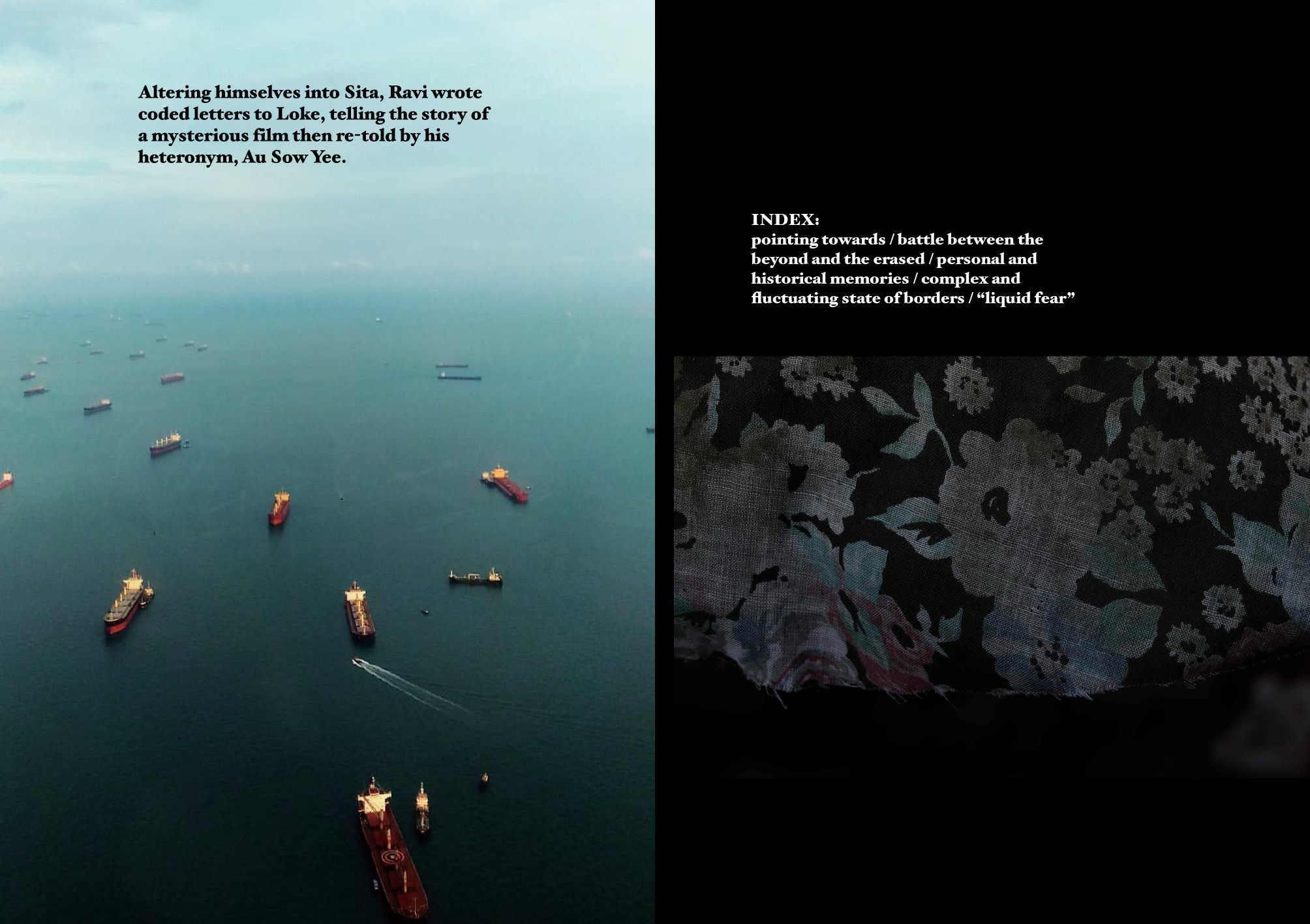
Maharani Mancanagara
Born Padang, Indonesia. Lives and works in Bandung, Indonesia.
Nurrachmat Widyasena
Bandung, Indonesia.
Rekaan Propaganda
series of six digital prints on paper, 120 x 85 cm (each), 2014.
In Rekaan Propaganda, history is used as a point of reference to recall and to realise humanity’s dream of a better world, both for ourselves and for Indonesia. Explored via historical promises, justifications, and discontinuities in the spheres of education and technology, the series presents the possibilities that the future holds.
The following translations by artist, Grace Samboh, and June Yap.
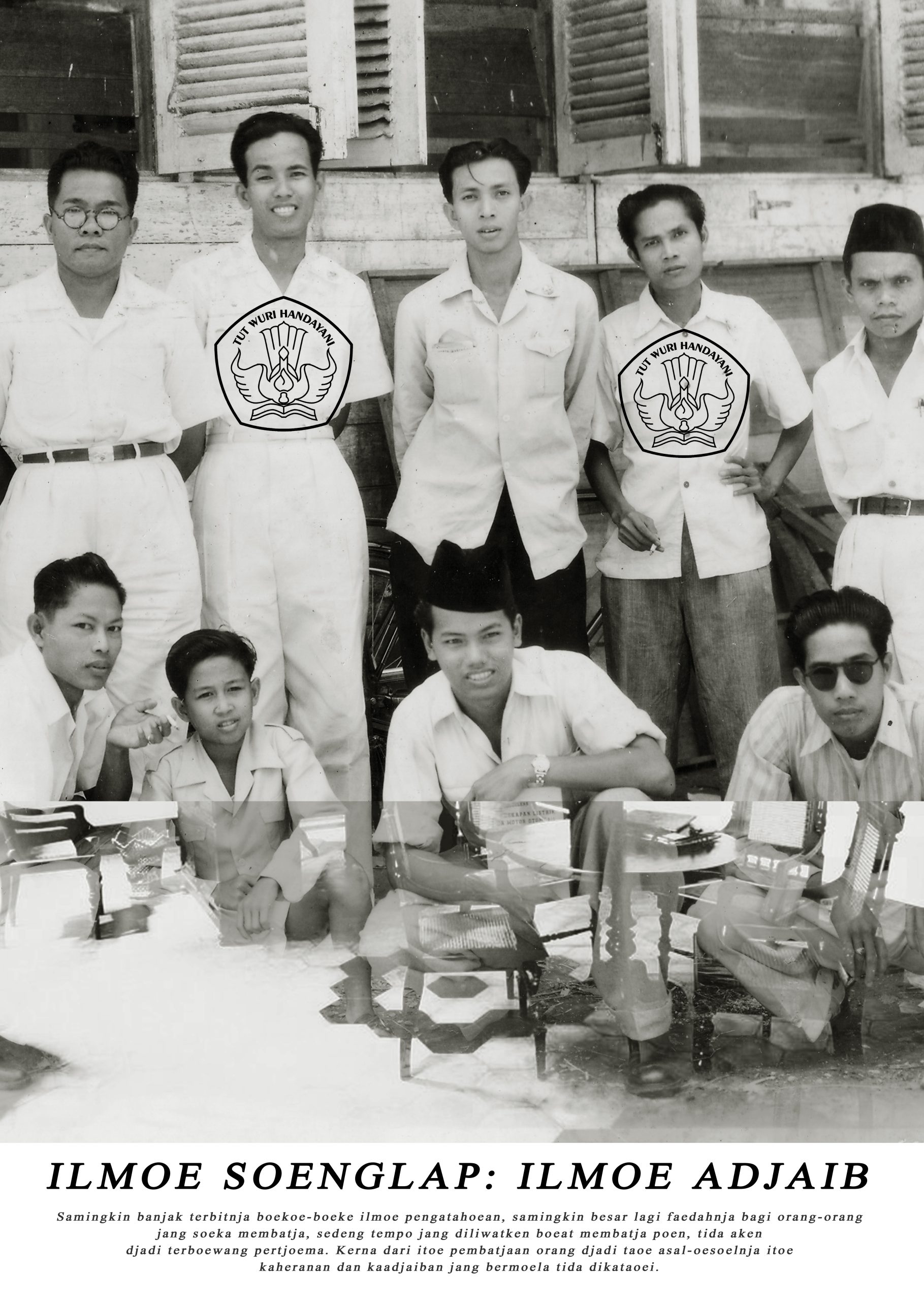
Science Magic : Science Witchcraft
The more scientific studies published, the more benefits there will be for
those who like to read them; time spent reading is never wasted. Through reading,
people will know of the origins of life and the wonders that have occurred.
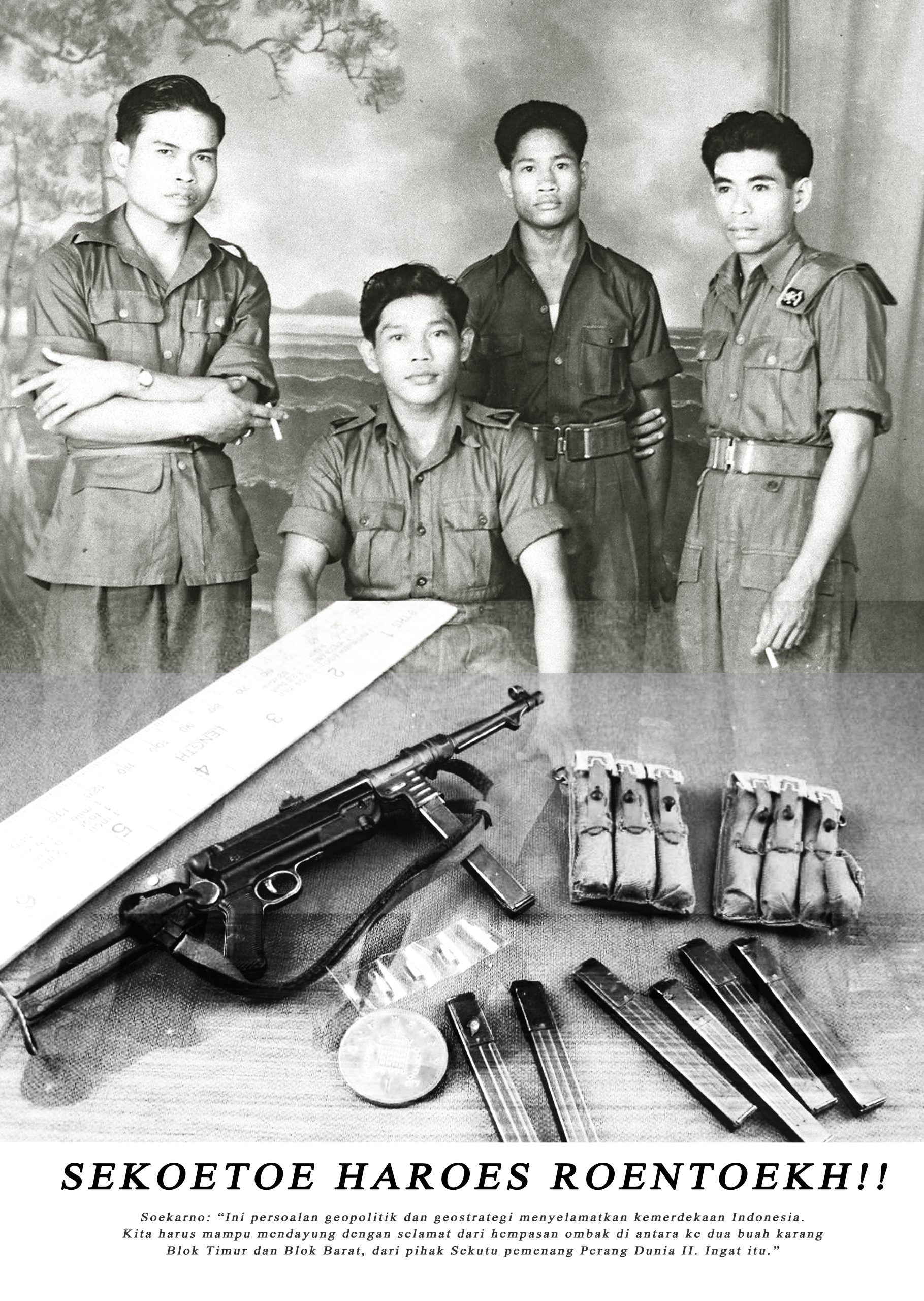
Allies Must Collapse!!
Soekarno: “The issue of geopolitics and geostrategy can come to the aid
of Indonesia’s independence. We must be able to paddle safely through
the pounding waves, between the corals of East Block and West Block,
from the Allied victors of World War II. Remember that.”
(President Soekarno’s answer to the young exponents of Menteng 31 on
the state of the post-independence cabinet).
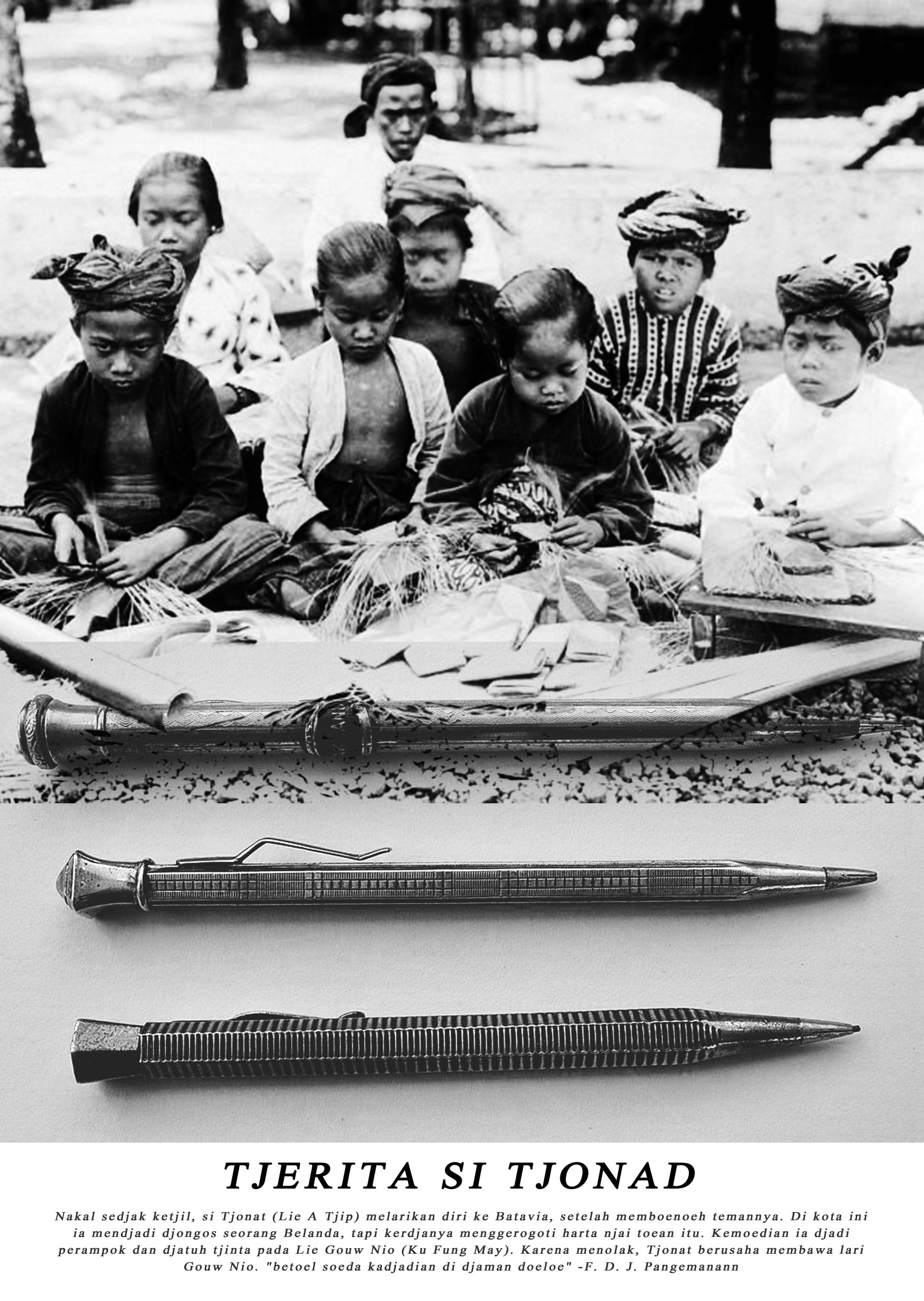
Story of Tjonad
Prone to mischief since childhood, Tjonat (Lie A Tjip) fled to Batavia after
killing his friend. Whilst in the city, he became a Dutch servant, though he
would often take advantage of his master’s property. Subsequently, he
became a thief, and fell in love with Lie Gouw Nio (Ku Fung May). His
advances rejected, Tjonat tried to kidnap Gouw Nio. “It happened just as
such, a long, long time ago.” –F.D.J. Pangemanann.

Ignition Sequence Start!!
Rocket’s engine is its greatest characteristic; both when propelled by fuel
or by oxidants without a combusting oxidising agent. This is not something
that every jet machine can do. Satellite launches, spacecrafts, lunar craft
and other forms of space propulsion all require a rocket engine.

The Indonesian Dream
Family is the greatest treasure. Like a magnificent castle. Or like a
meaningful poem. Even the splendour of pearls cannot compare to that of
the family. Good morning, Mother. Good morning, Father. The sun shines
this beautiful day. Equally radiant are our sons and daughters, ready to be
of service.
(Lyrics from the theme song of an Indonesian popular television series
portraying a happy family.)
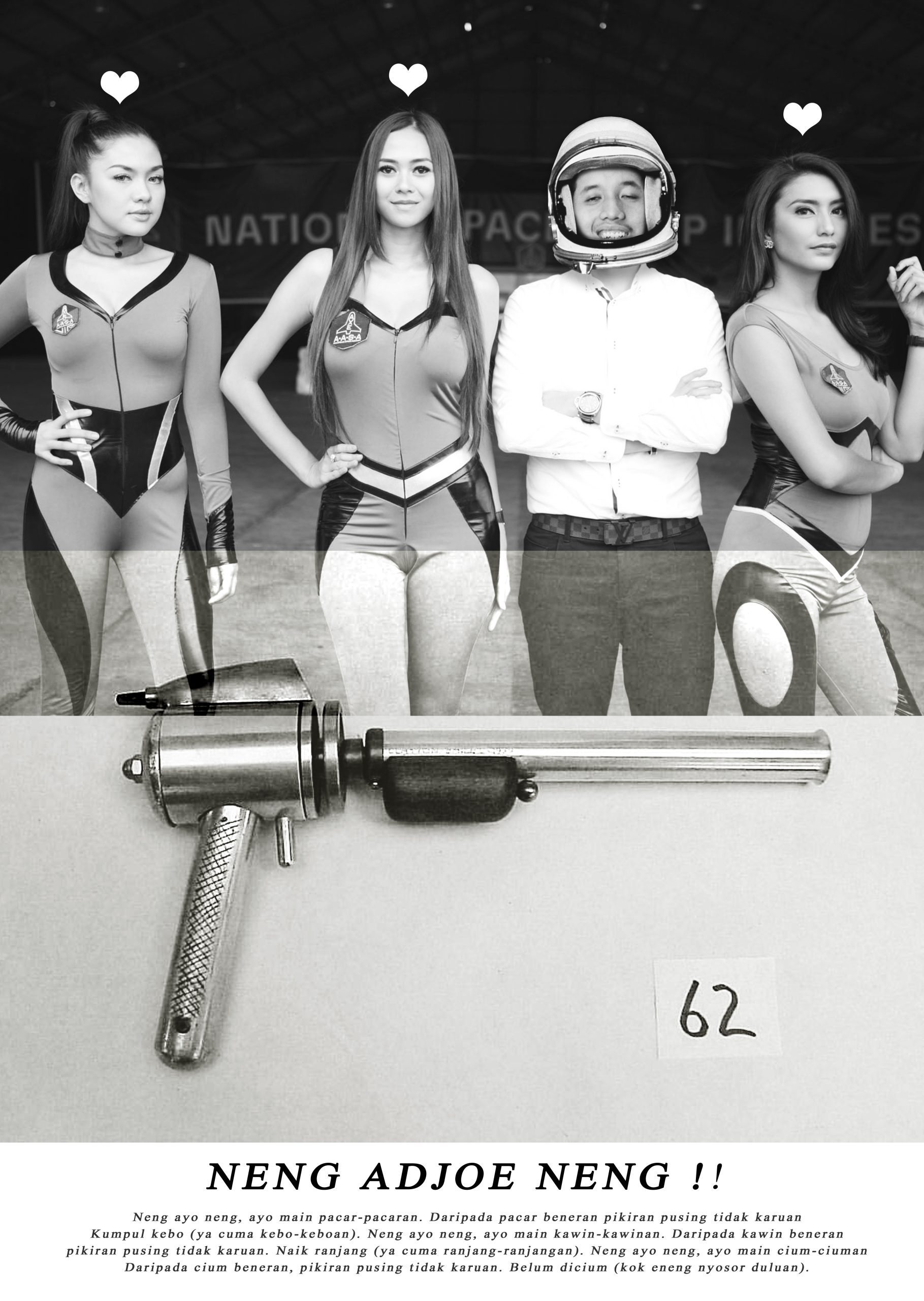
Hey Girl, C’mon Girl
Hey girl, c’mon girl, let’s play at dating. Rather than having a real
boyfriend who makes you dizzy and unhappy. Cohabiting (yes, just playing
at cohabiting, not the real thing). Hey girl, c’mon girl, come let’s
pretend to be married. Instead of a real marriage that makes you dizzy and
unhappy. Let’s go to bed (yes, just only to bed). Hey girl, c’mon girl, let’s
play at kissing. Instead of a real kiss, that makes you feel dizzy. I haven’t
kissed you yet (why are your lips already on mine).
(Excerpt from a dangdut song — popular Indonesian music that combines
traditional and local film music, and Western rock music — about a man
flirting with a girl whom he has just met)
Laura Horelli
Born Helsinki, Finland. Lives and works in Berlin, Germany.
Namibia Today
Nine of 18 billboards, inkjet and offset prints, 356 x 252 cm, 2017.
The SWAPO (South West Africa People’s Organisation) Liberation Movement fought for Namibia’s independence from South Africa from 1960 to 1990 and has governed the country since. The artist pays special attention to the period between 1980 and 1985 when the English-language journal Namibia Today was printed in the former GDR. Its editorial board was based in exile in Luanda, Angola.
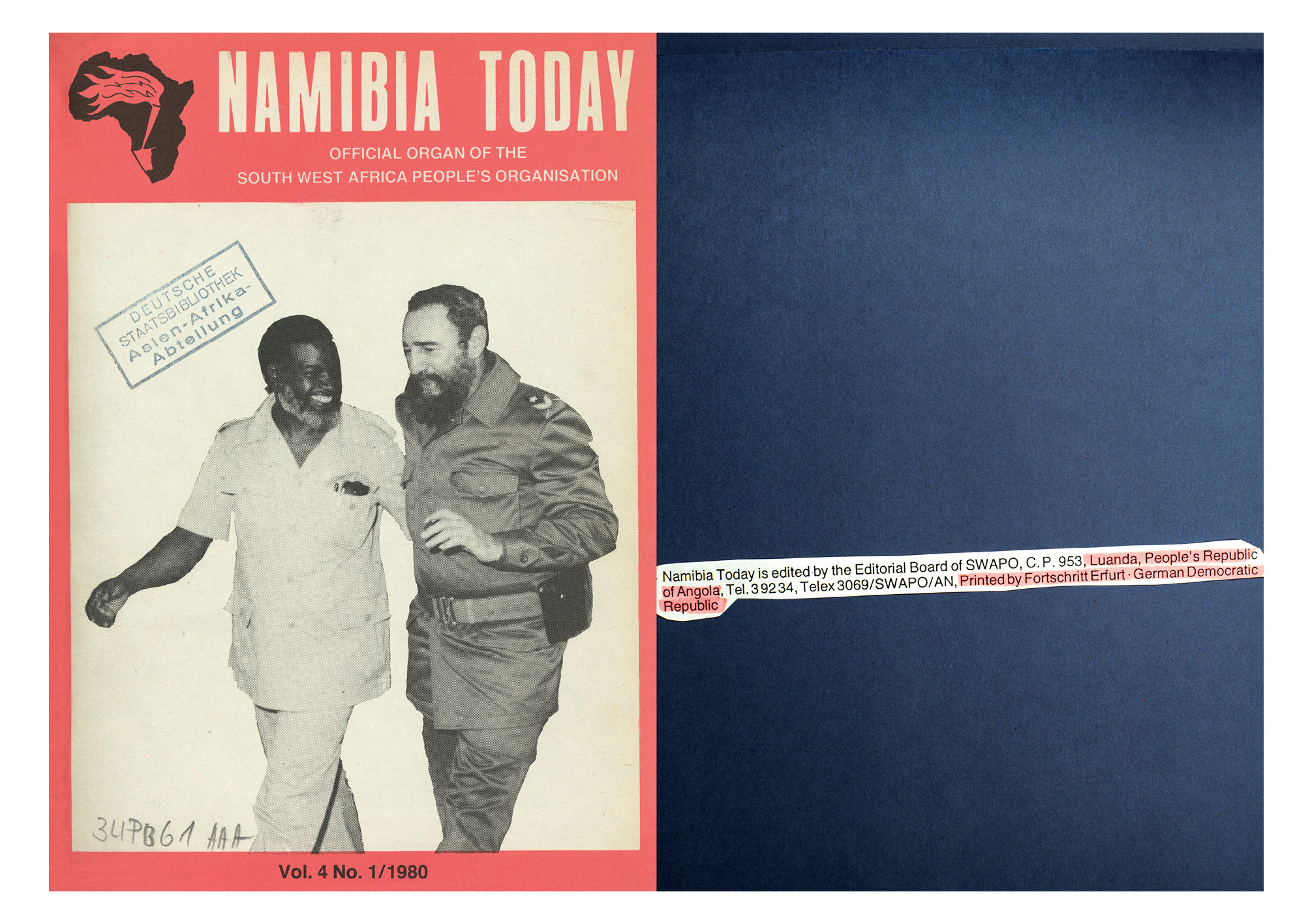
Left: Sam Nujoma and Fidel Castro, 6th Summit of Non-
Aligned Countries, Havana, Cuba, 3–7 Sept 1979.
Front page Namibia Today, Official Organ of the
South West Africa People’s Organisation (SWAPO),
Vol. 4 No. 1/1980. Berlin State Library.
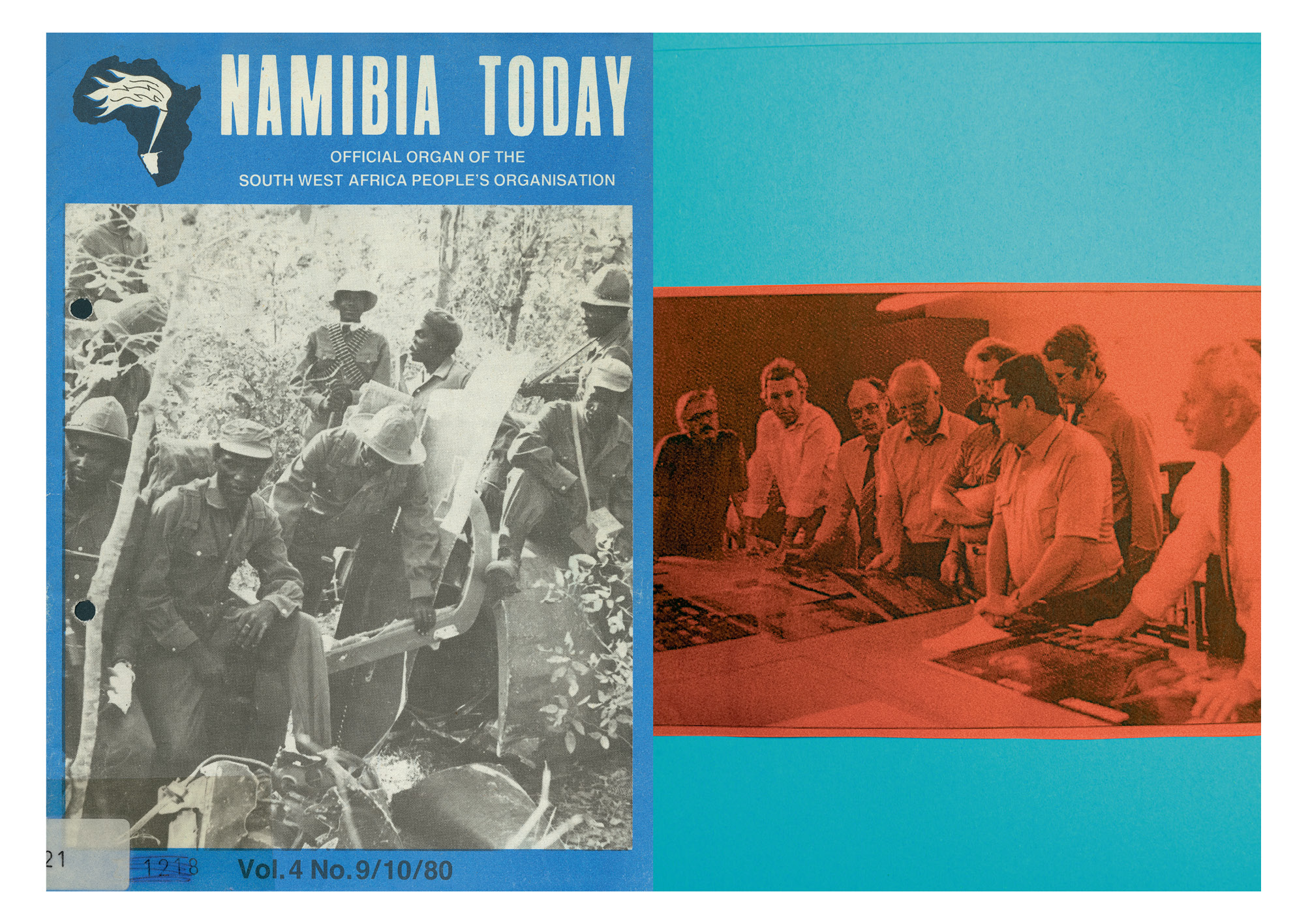
Left: Namibia Today, Vol. 4 No. 9/10/80. Library of the
Friedrich-Ebert-Stiftung.
Right: A delegation from the state printing houses informs
itself in Erfurt at the end of the 1980s about results in
consumer goods production, Dieter Schmidt, Jürgen
Taudien, Siegfried Hofmann et al. Druckhaus Gera
Archive.
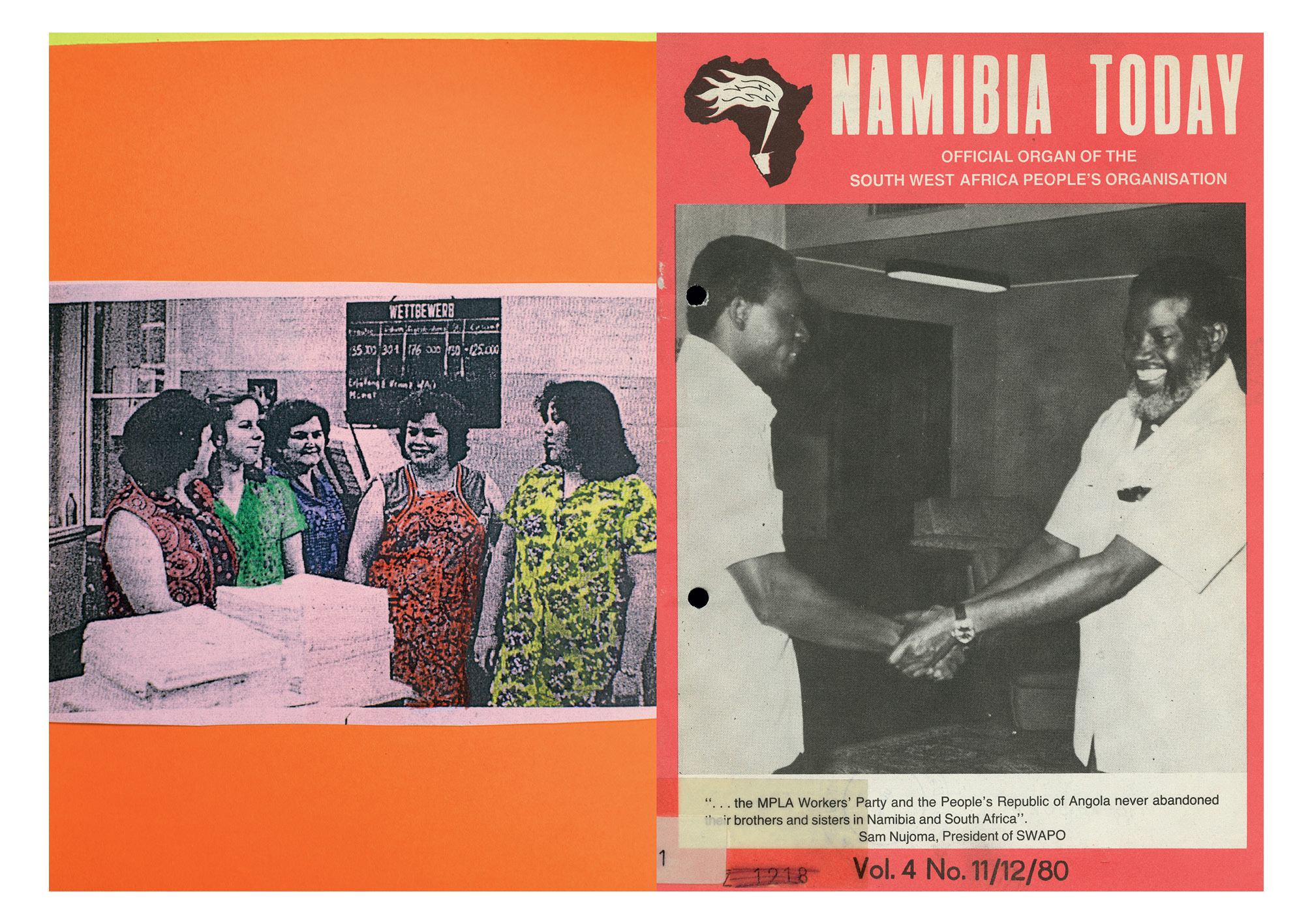
Left: Colleagues Mund, Finke, Springer, Kopka, Heber
(binding collective) in “Offsetrolle“ (official political
organ of the printing house “Fortschritt” in Erfurt), Nr.
4/20.2.1980, p. 1. Erfurt City Archive.
Right: Namibia Today, Vol. 4 No. 11/12/80. Friedrich-Ebert-
Stiftung Library.
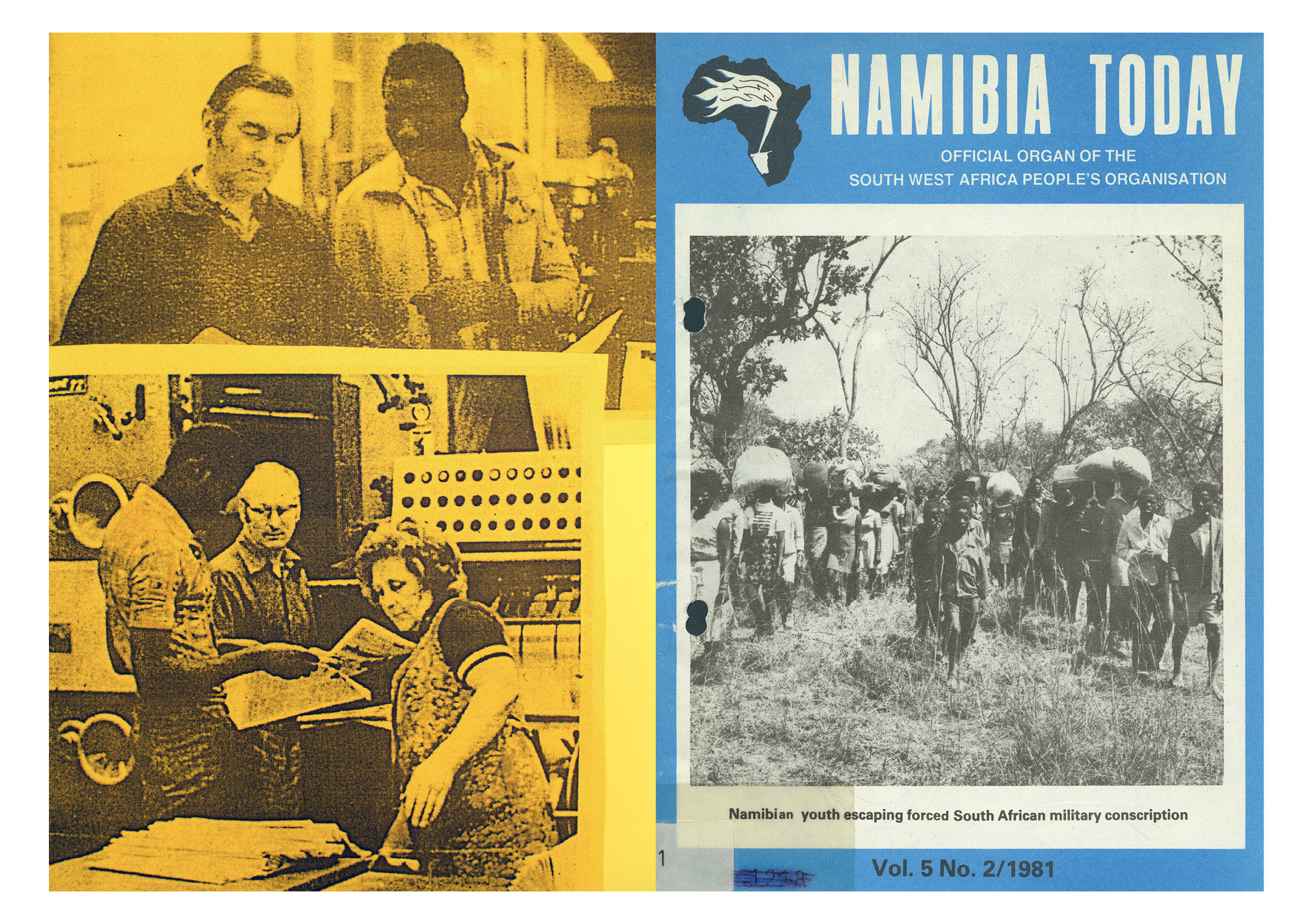
Top left: Colleagues Kaufmann, David Maseko. “Offsetrolle,”
Nr. 6/1980 (photo: Romer).
Bottom left: Colleagues David Maseko, Helmut Schade, Gisela
Stegmann. “Offsetrolle,” Nr. 10/1978. Erfurt
City Archive.
Right: Namibia Today, Vol. 5 No. 2/1981. Friedrich-Ebert-
Stiftung Library.

Top left: A note from Ilona Schleicher’s lecture “The GDR
Solidarity Committee and Nordic Support for the
Liberation Movements: Between Competition and Co-
operation, Cape Town and Robben Island,” 11-14 Feb 1999.
Bottom left: Solidarity cargo from Finland, 1985. SODI Archive.
Right: Namibia Today, Vol. 5 No. 6/1981. Frankfurt University
Library.
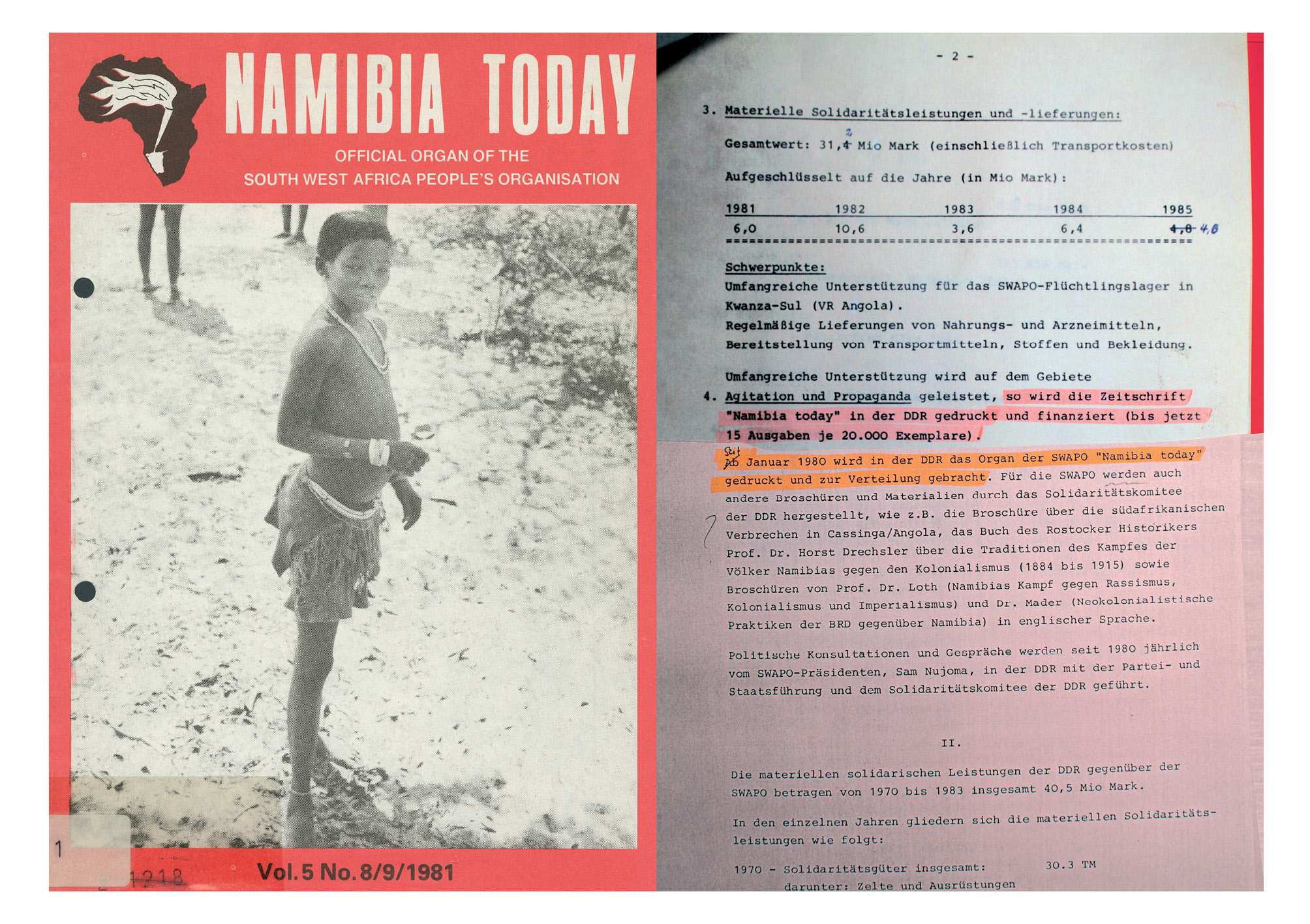
Left: Namibia Today, Vol. 5 No. 8/9/1981, Friedrich-Ebert-
Stiftung Library.
Right: German Federal Archives, BArch DZ8 522 / SWAPO.
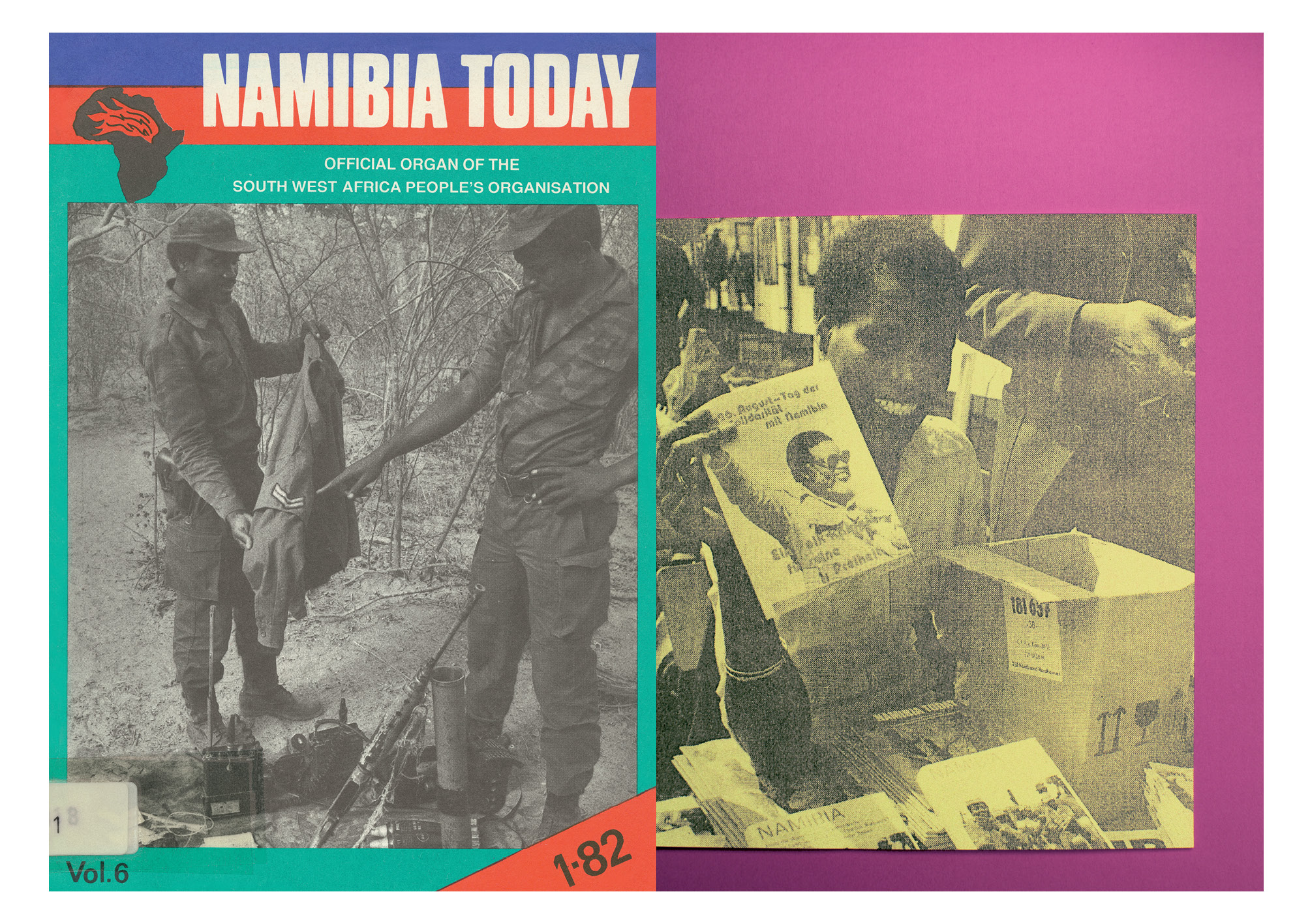
Left: Two PLAN fighters in Utapi, 75 km NW of Oshakati,
18 Jan 1982. Namibia Today, Vol. 6 No. 1/82.
Friedrich-Ebert-Stiftung Library.
Right: A Namibian student selling SWAPO information
material at a solidarity bazaar at Alexanderplatz,
Berlin (GDR), Namibia Today, Vol. 6 No. 3/82
Friedrich-Ebert-Stiftung Library.
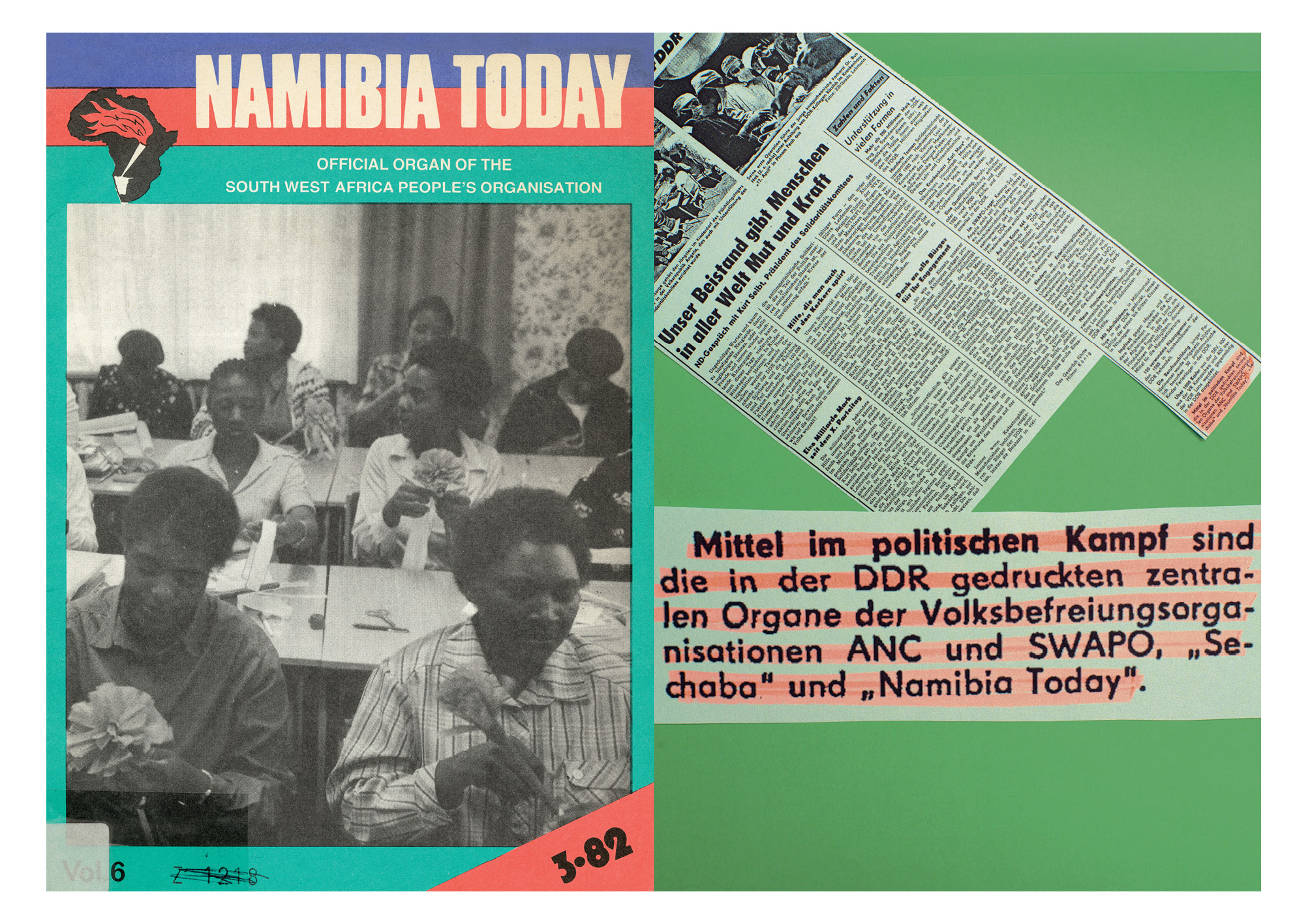
Left: Kindergarten teachers learning to make artificial
flowers. Namibia Today, Vol. 6 No. 3/82.
Friedrich-Ebert-Stiftung Library.
Right: Cuttings from Neues Deutschland, 20 Dec 1985, p. 6.
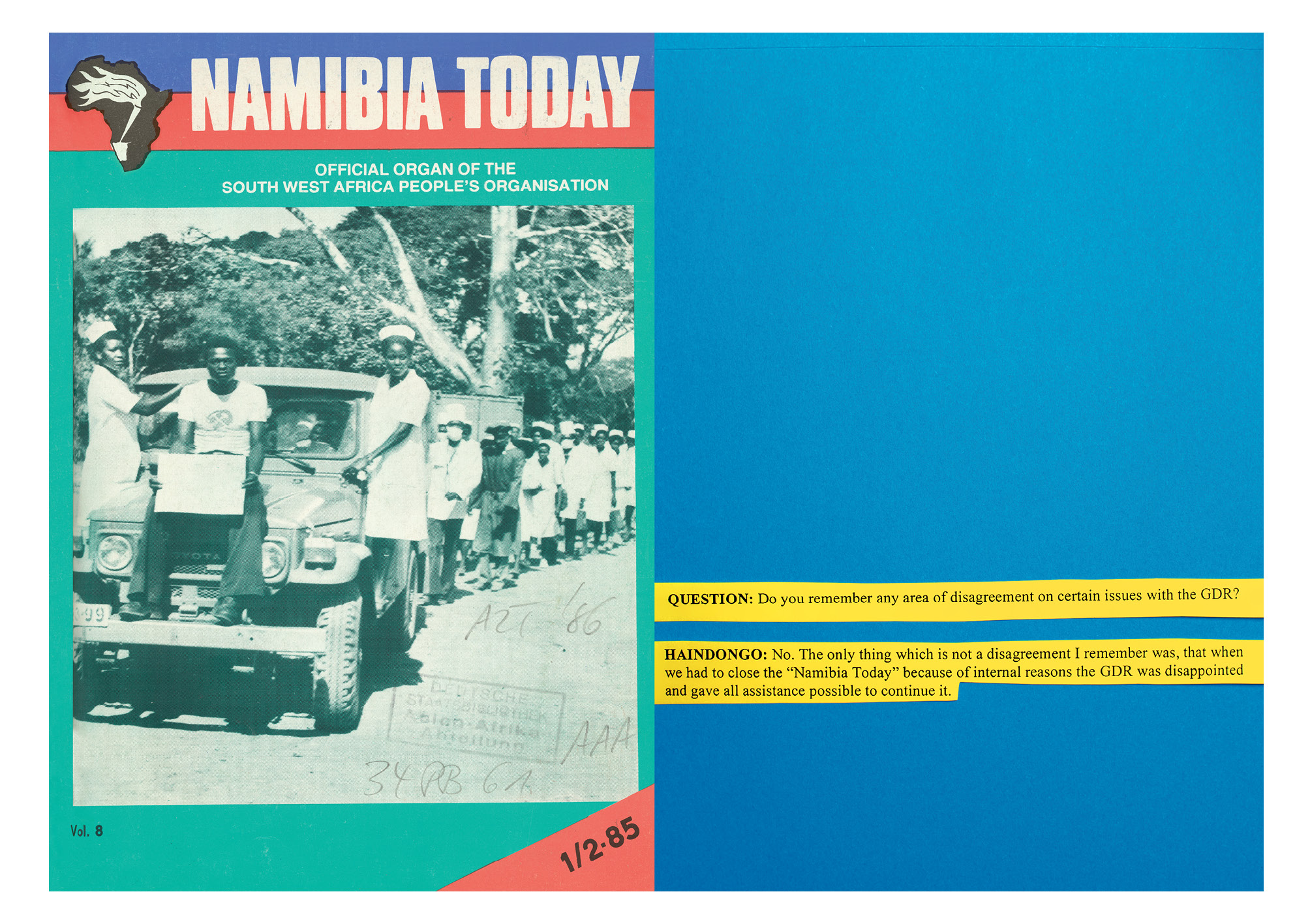
Left: Medical workers at the SWAPO Education and
Health Centre, Kwanza-Sul (Angola). Namibia
Today, Vol. 8 No. 1/2/85. Berlin State Library.
Right: Cuttings from a collection of interviews by Hans-Georg
Schleicher about the Liberation Struggle and the
Independence Process of Namibia. German Federal
Archives, BArch, SgY 46/6, p. 42–43.
Artists’ Bios
Au Sow Yee (b. 1978, Malaysia) is currently based in Taipei and Kuala Lumpur. Through hybrid forms that primarily involve videos, conceptual and installation art, Au Sow Yee’s works explore the relationship between the moving image and its production, as well as larger questions of history, politics and power. Au’s recent works focus on the liberation of history from Cold War influences, reexamine its remnants in contemporary society, and re-envision the awareness of historical issues in Malaysia and Southeast Asia at large.
Weixin Quek Chong (b. 1988, Singapore) has exhibited in London, Paris, Seoul, Singapore and Vienna among other places. Chong holds an MA in Fine Arts from the Royal College of Art, London and a BA in Fine Art from LASALLE College of the Arts, Singapore. She is fascinated by the relationships between the digital and organic, stylisation and nature, as well as surface and perceived superficiality. She is interested in material metaphors for human relationships and the psychology behind structures and projections of power, value and desire.
Laura Horelli (b. 1976, Helsinki, Finland) lives and works in Berlin, Germany. Horelli’s work has been exhibited internationally at the 49th and 53rd Venice Biennales; Manifesta 5, San Sebastian; Gwangju Biennale; Kiasma, Helsinki; n.b.k., Berlin and Goethe-Institut Nairobi. Her films have been screened at festivals like the Berlinale, IndieLisboa and CPH:DOX. In 2011 she received the Hannah Höch Prize for Young Artists from the City of Berlin. She was awarded a five-year working grant by the Arts Promotion Centre Finland in 2012. Horelli is represented by Galerie Barbara Weiss, Berlin. Namibia Today was produced for Art in the Underground, nGbK, Berlin.
Anouk Kruithof (b. 1981, Dordrecht, the Netherlands) is an artist working in Mexico City, New York and Amsterdam. Her multilayered, interdisciplinary approach encompasses photography, sculpture, installation, artist-books, text, performance, video and interventions in the public domain. Her work has been exhibited internationally at Museum of Modern Art, New York; The Stedelijk Museum, Amsterdam; MBAL Switzerland; The Xiangning Art Museum, Shenzhen China; Daegu Culture and Arts Center, Korea; Multimedia Art Museum in Moscow, among others. Kruithof received the public prize of the Volkskrant Beeldende Kunstprijs in 2016, The Meijburg Art Commission in 2015 and won the Charlotte Köhler Prize in the Netherlands in 2014.
Kedsuda Loogthong (b. 1983, Songkhla, Thailand) graduated from the Faculty of Fine and Applied Arts at Bangkok University, Thailand in 2006. Loogthong’s early works examine the urbanisation of her rural landscape and society, and how consumerism has affected the lives of country folk. Her recent works explore the materiality and symbolism of books as icons and nostalgic objects of reverence. Loogthong has participated in solo and group exhibitions including: Tomorrow and Unknown Silence (2014) at Richard Koh, Singapore; The Book of Silence (2013) at Finale Art File, Philippines; and in South Korea and Finland. Her works are part of the collection in Singapore Art Museum and in private collections in Thailand, Singapore, Malaysia and Philippines.
Maharani Mancanagara (b. 1990, Padang, Indonesia) graduated from Institut Teknologi Bandung, Faculty of Art and Design, with a major in printmaking. In 2013, she received the Soemardja Award #3 from Soemardja Gallery, and was nominated for the Indonesia Art Award. In 2014, she was nominated for the Young Artist Award from Art Show Busan, South Korea. Her works explore Indonesia’s history, from ancient times to the present, through her personal and family experiences, as well as through artefacts that belonged to her late grandfather. Maharan primarily works with printmaking, mixed media and drawing.
Hajnal Németh (b. 1972, Szőny, Hungary) creates musicals, operas, performances, films, photographs, as well as modifications of poems, songs and texts that encourage political statements. Németh has participated in solo and group exhibitions in Europe, America and Asia, including MUMOK, Vienna; Martin-Gropius-Bau, Berlin; The Kitchen, New York; Renaissance Society, Chicago; Tate Modern, London; Singapore Art Museum, Singapore; Ludwig-Museum, Budapest; TENT, Rotterdam; KW Berlin; Casino Luxembourg; Moderna Museet, Stockholm; Picasso Museum, Barcelona; Palais de Tokyo, Paris. She represented Hungary at the Venice Biennale 2011.
Nurrachmat Widyasena (b. 1990, Bandung, Indonesia) majored in printmaking at Institut Teknologi Bandung, Faculty of Art and Design. He works primarily with the applied techniques of printmaking, installation and drawing. His works explore retro-futurism and the crossroads between reality and fantasy.
Marienne Yang (b. 1983, Singapore) holds a BFA from the School of Fine Arts, The University of Tasmania, Australia, and was a recipient of the Dean’s Roll of Excellence in 2004. She completed her MA in Contemporary Practice from the University of Huddersfield in 2009, and her Postgraduate Diploma in Higher Education with the National Institute of Education in 2011. Yang’s works often depict near-pain situations that are dealt with dispassionately and from a distance. Over the years, this process has led her across disciplines: from painting to installation, photography, etchings and embroideries.

